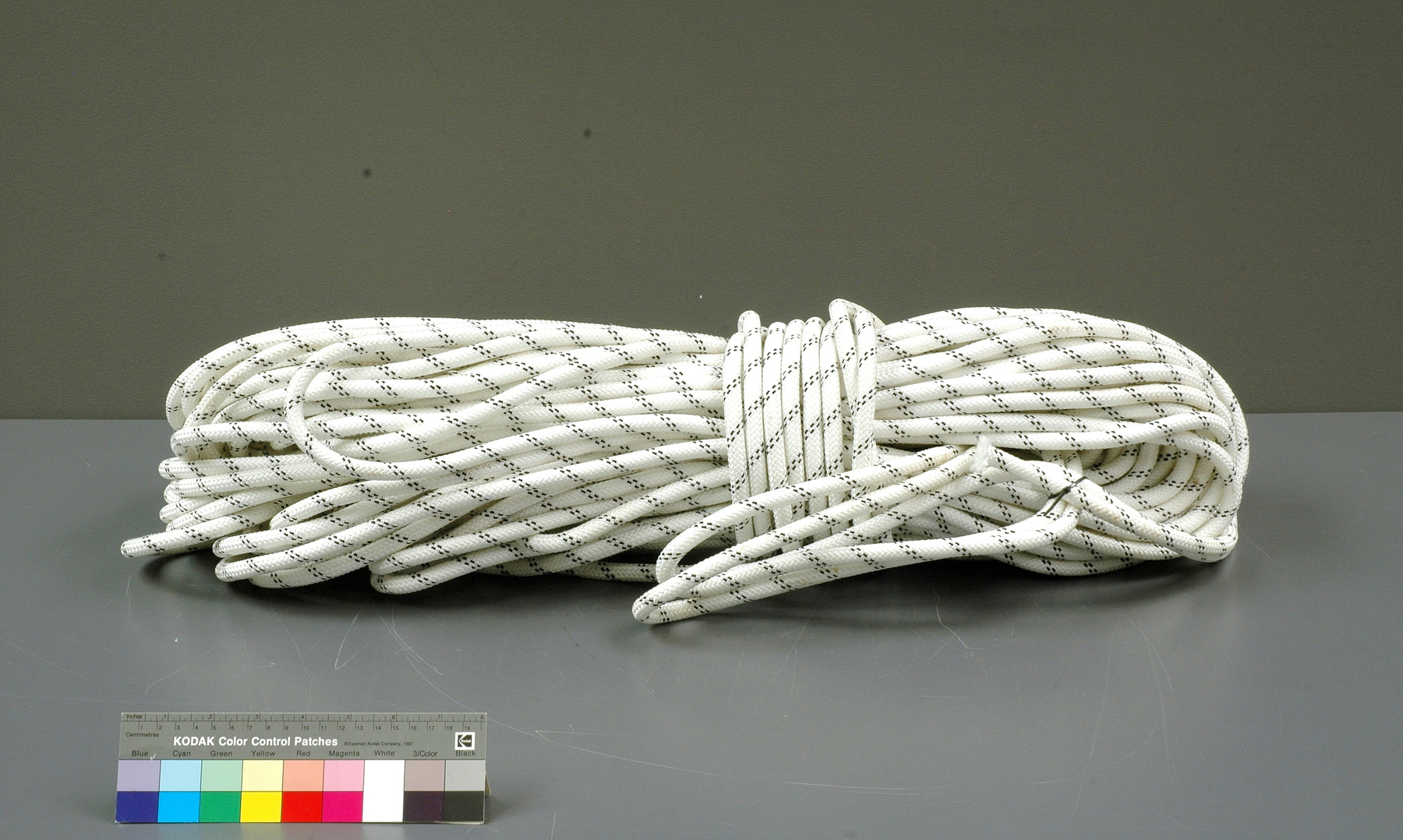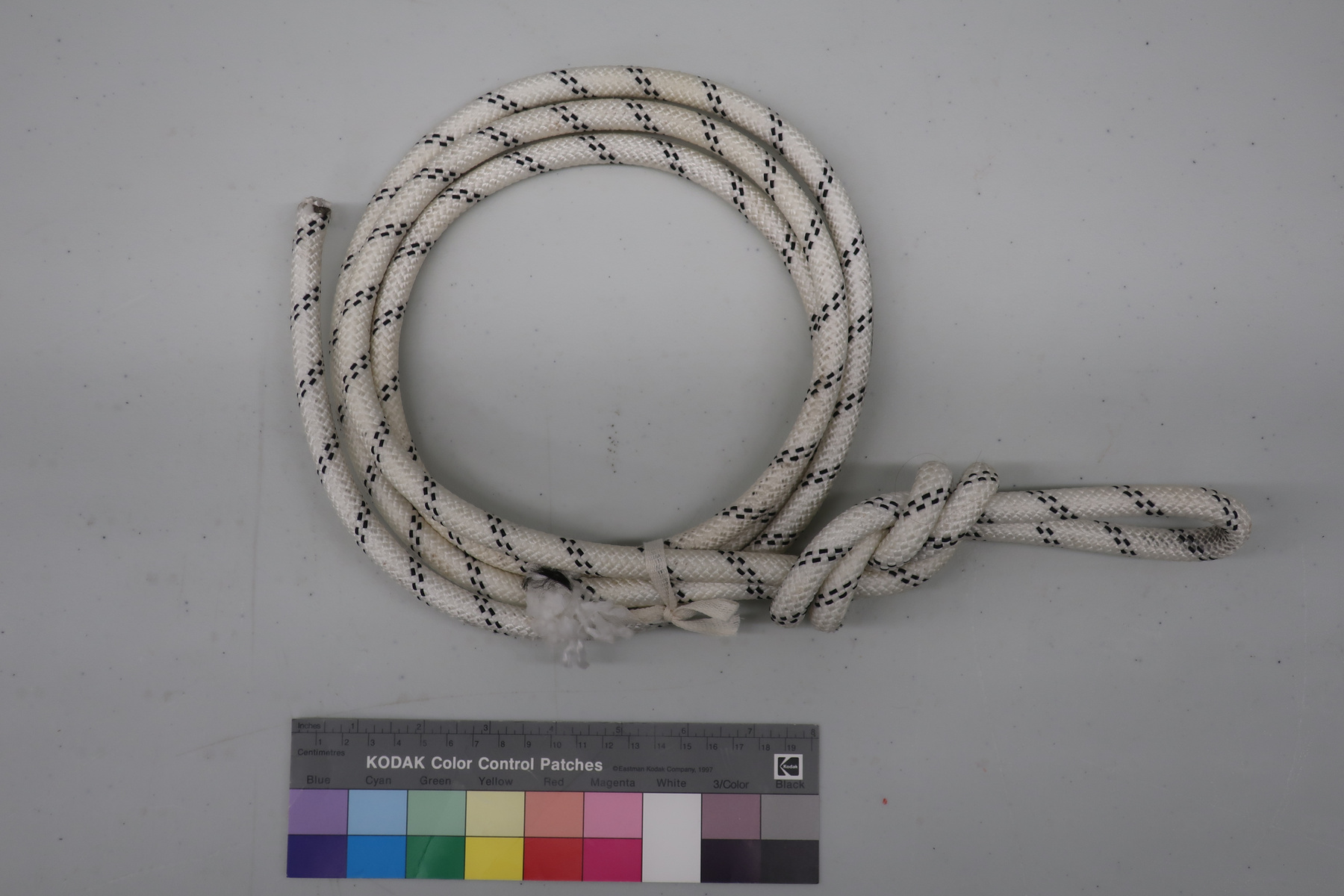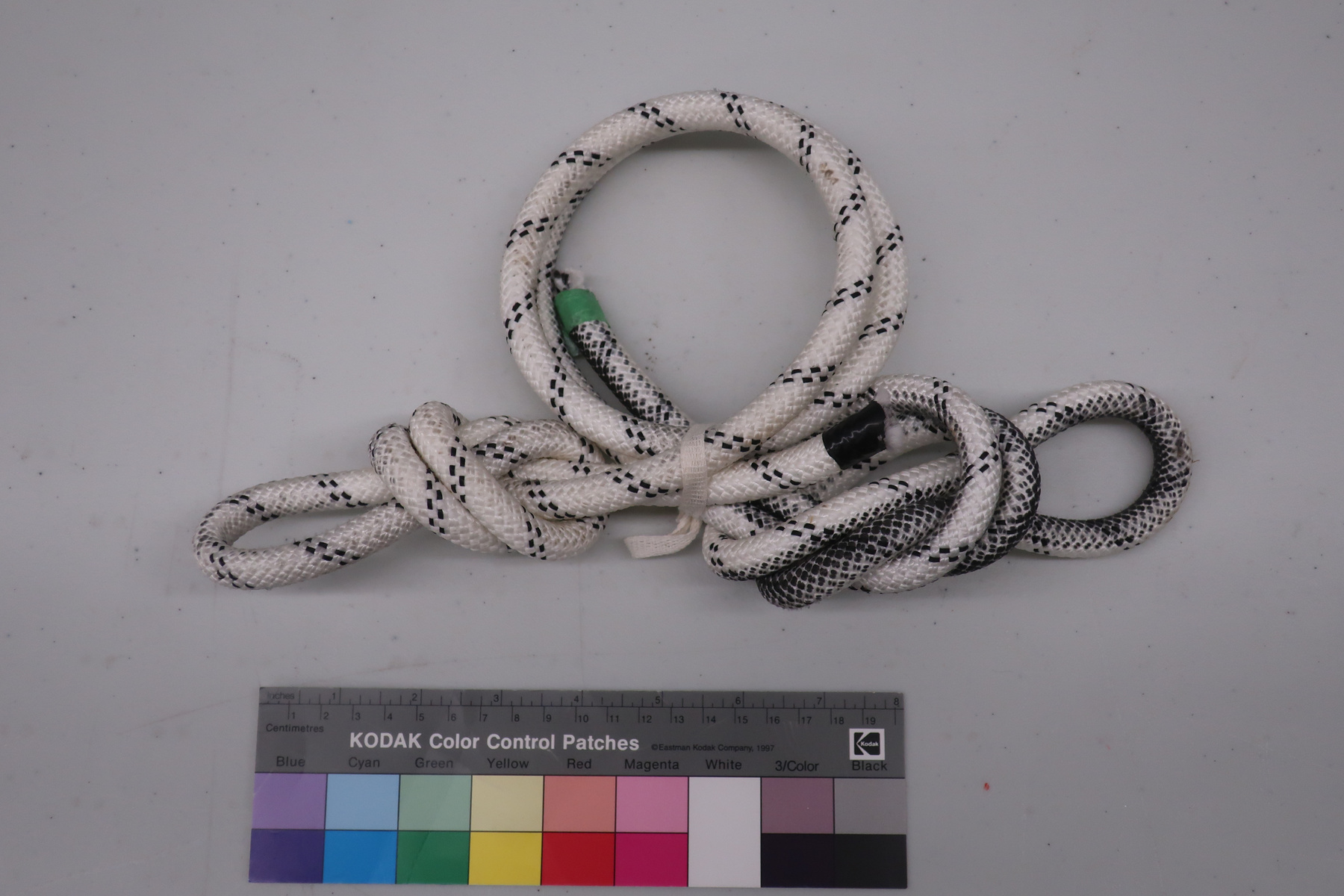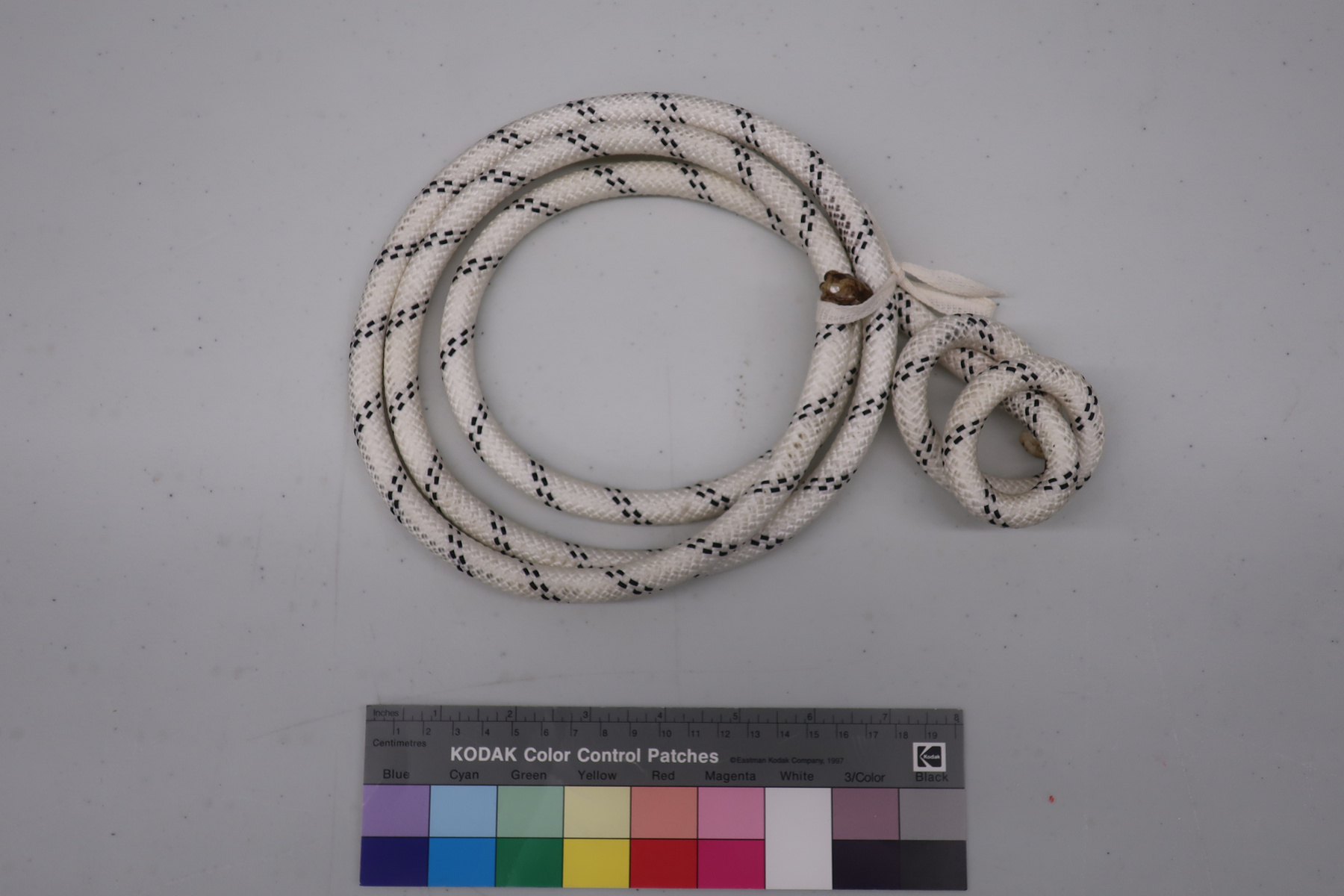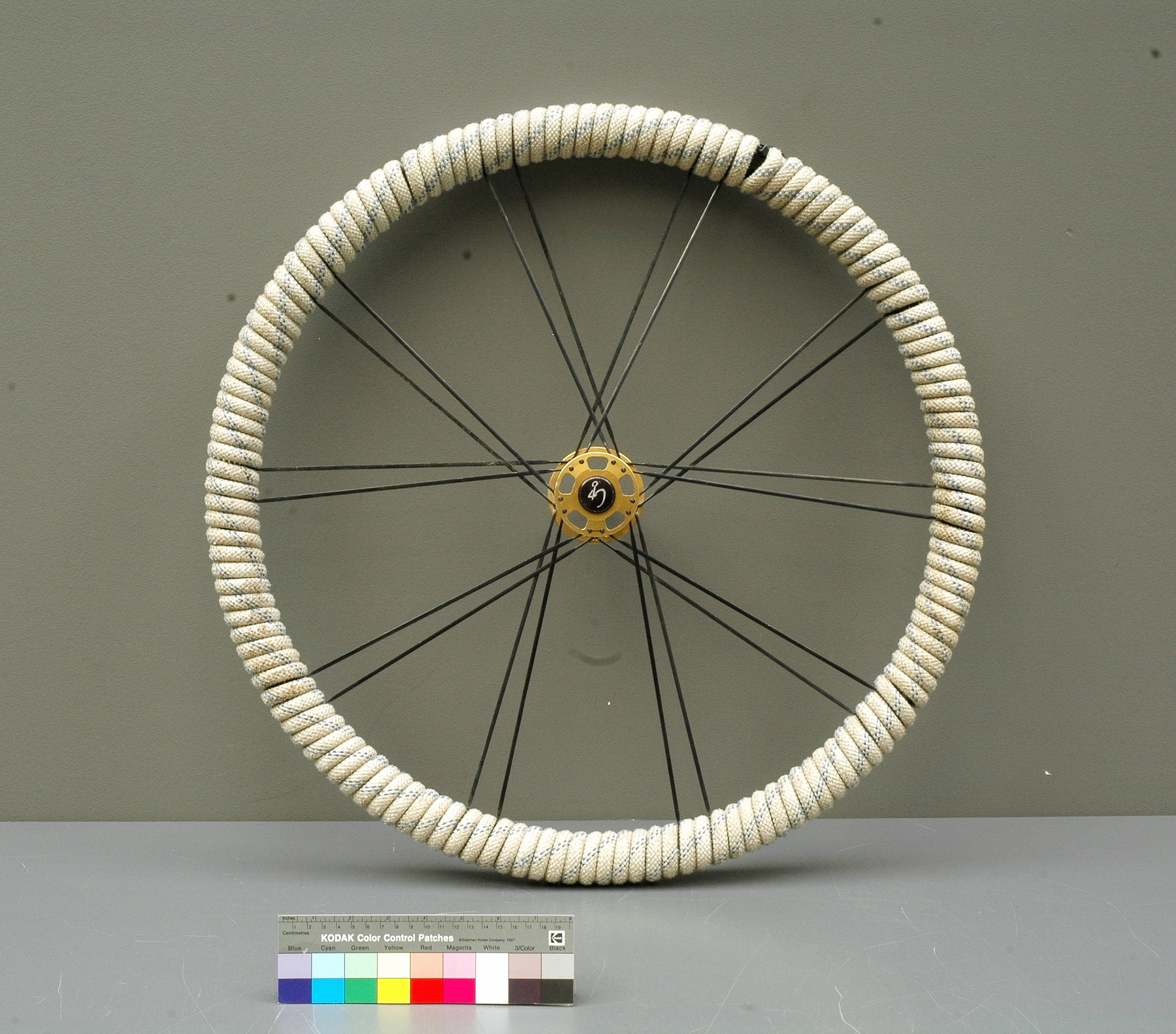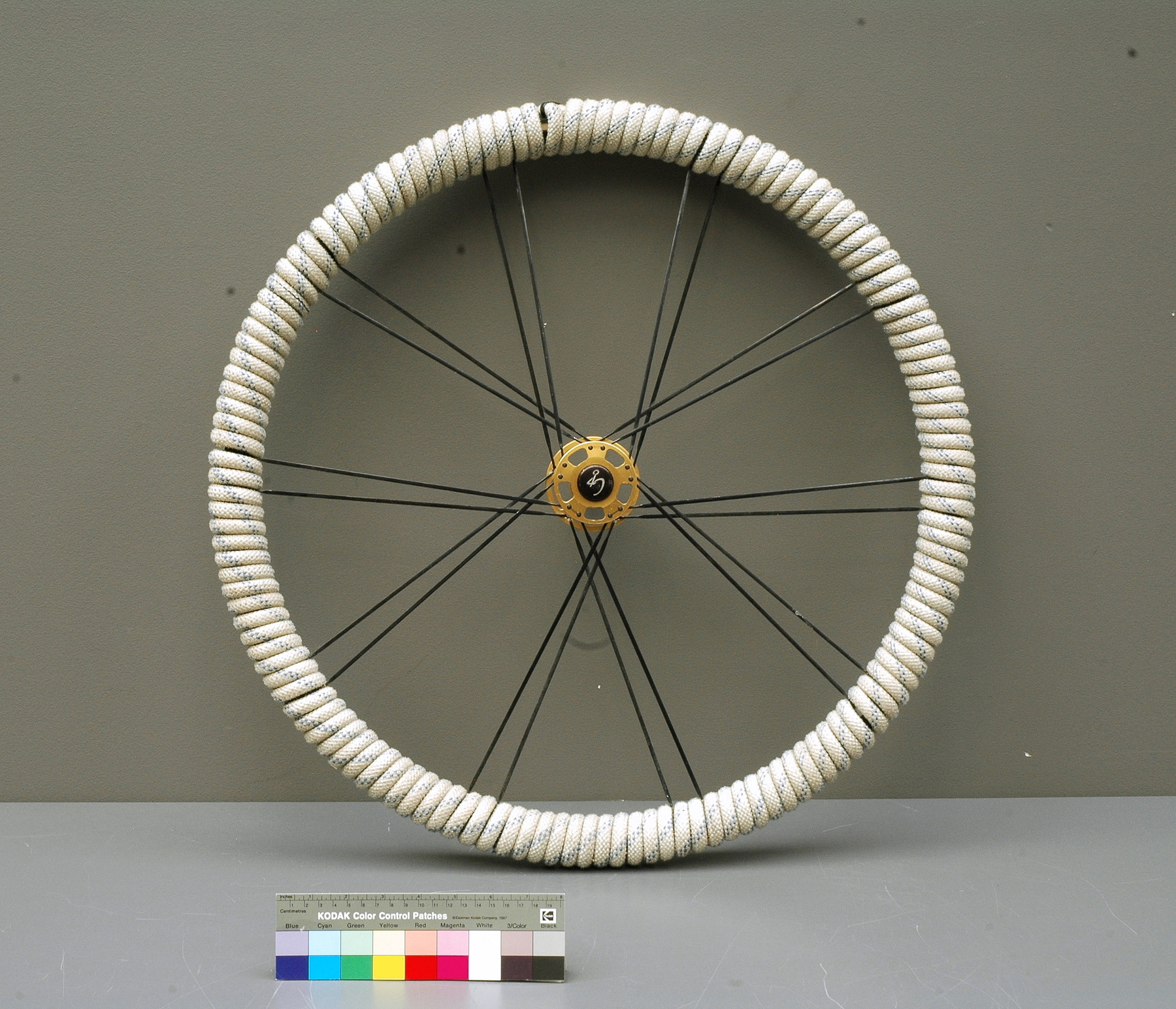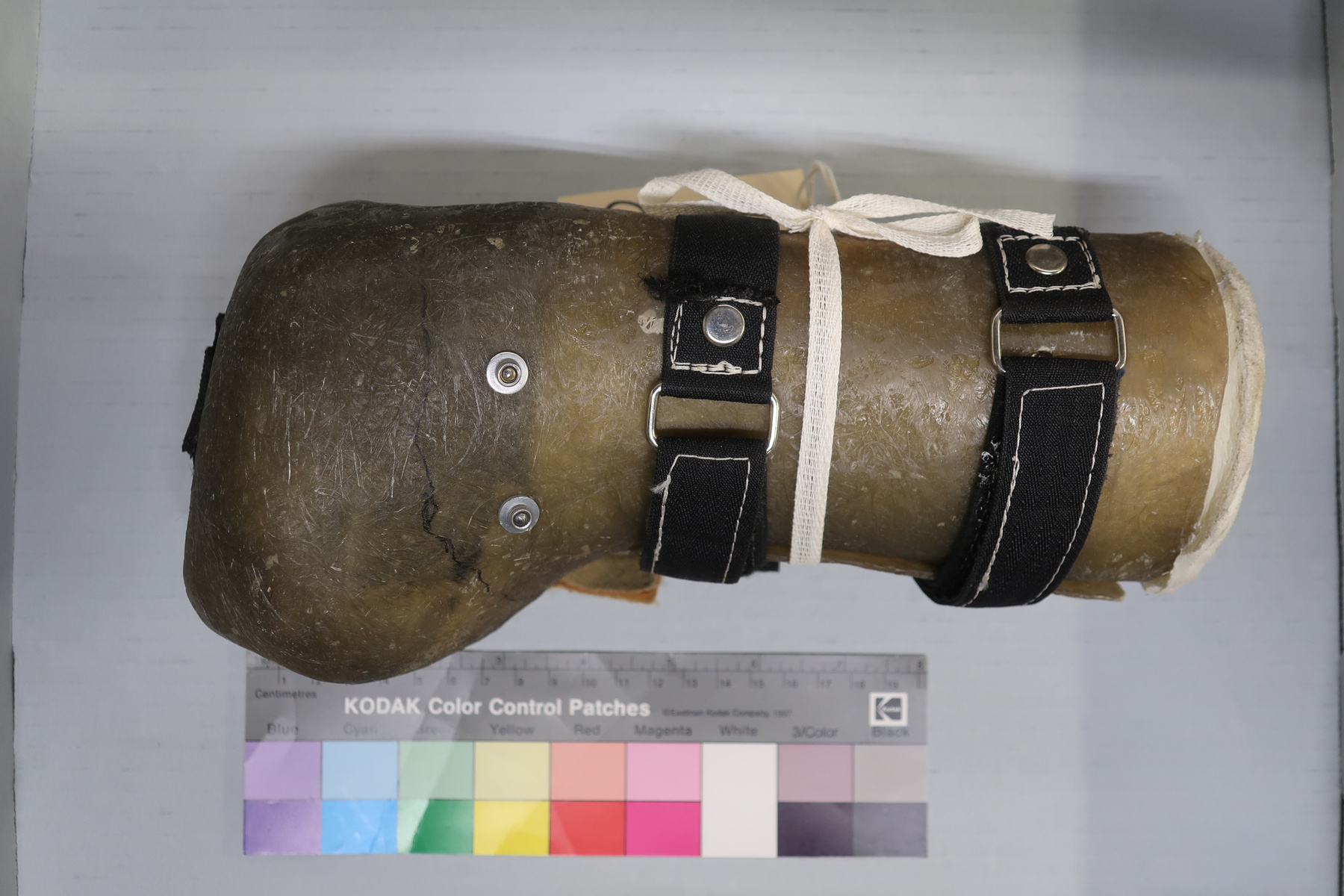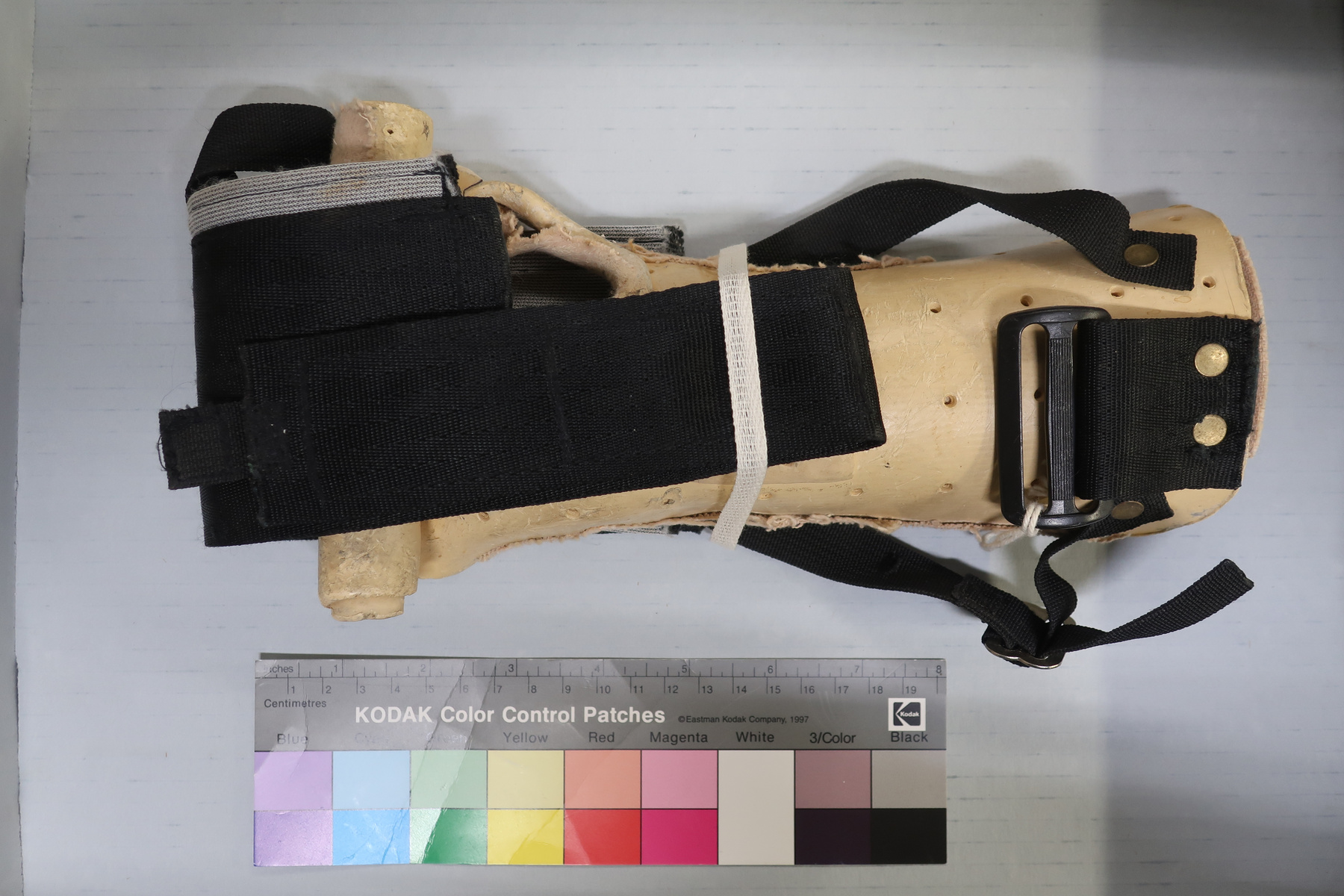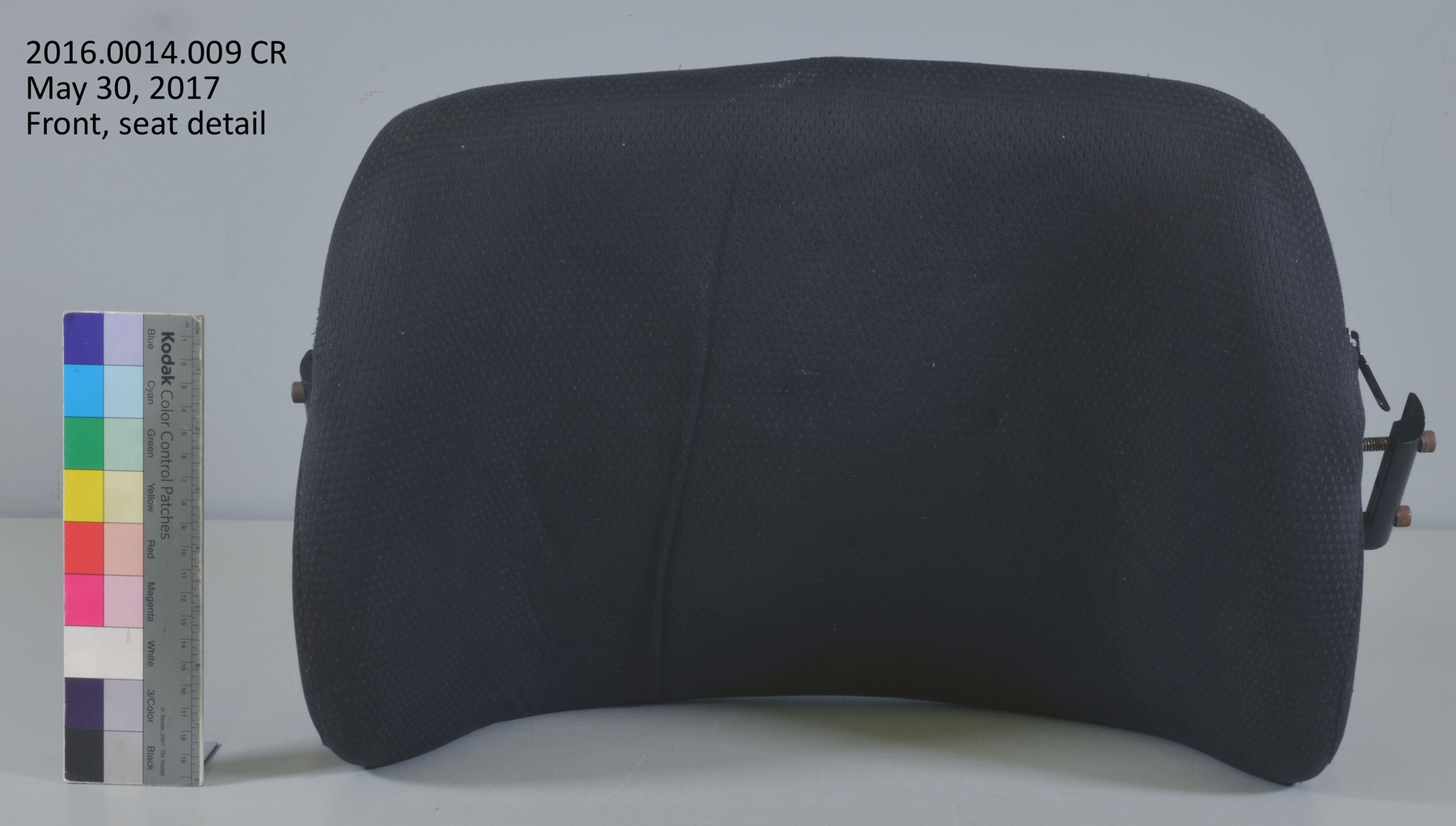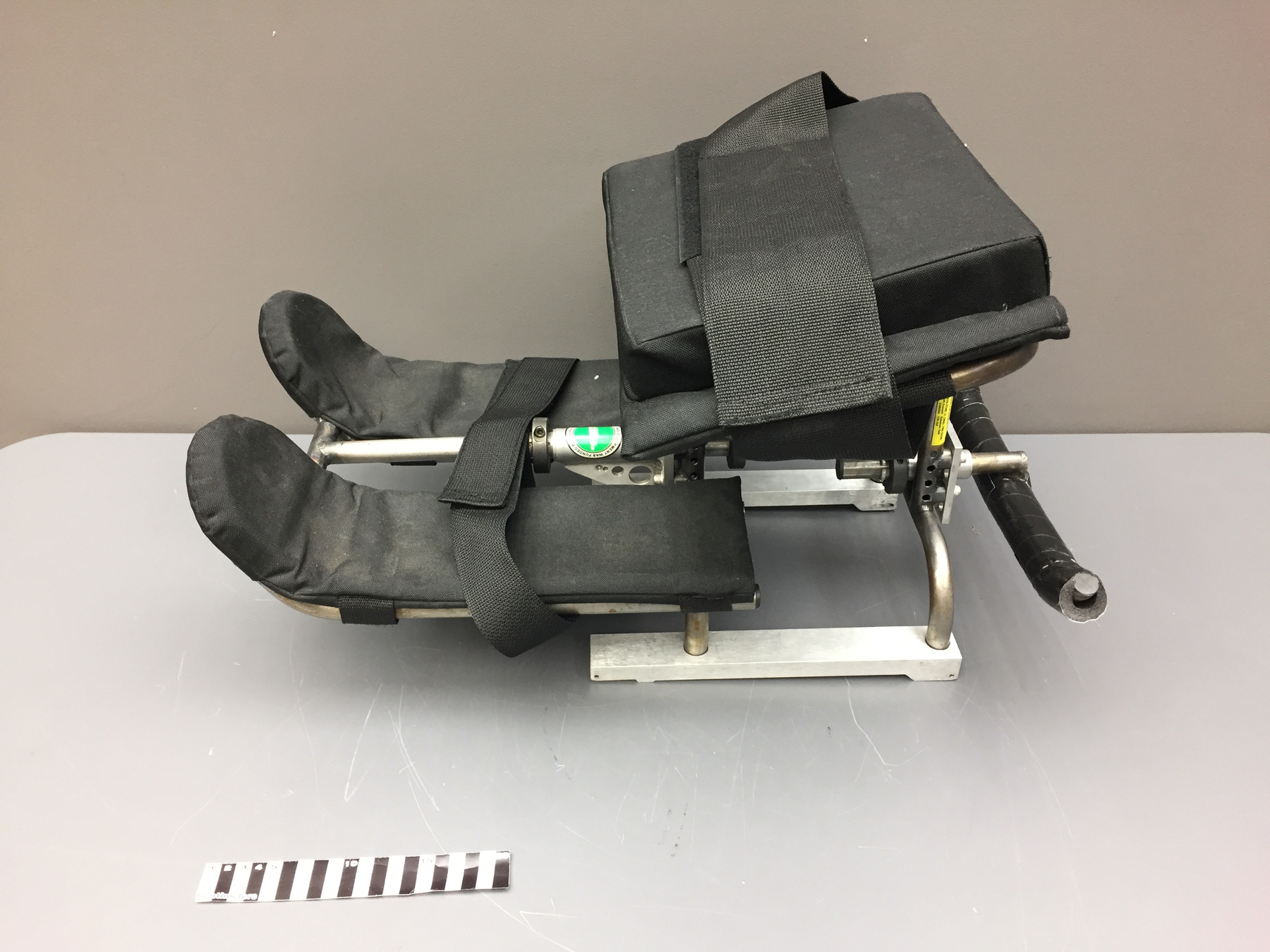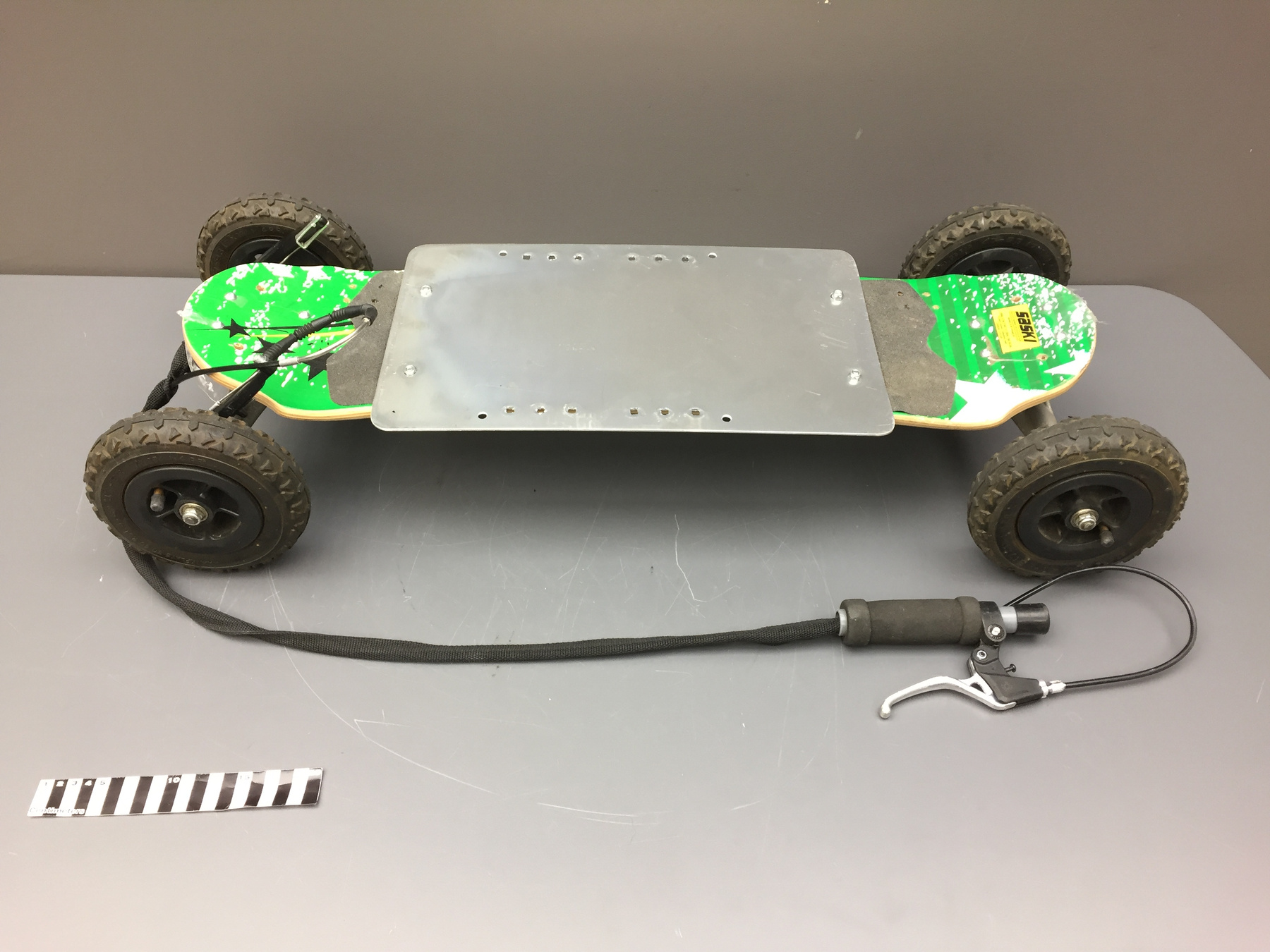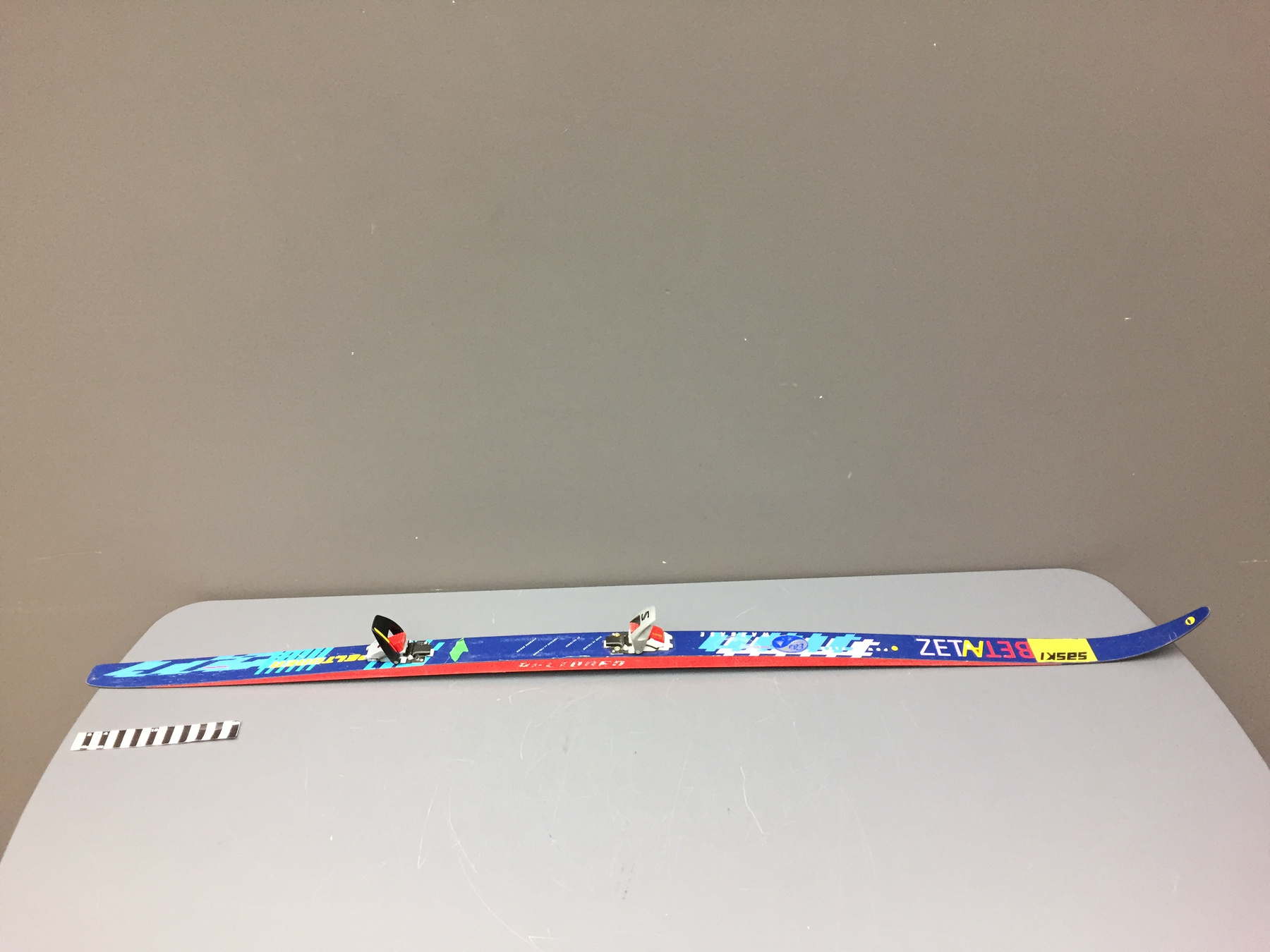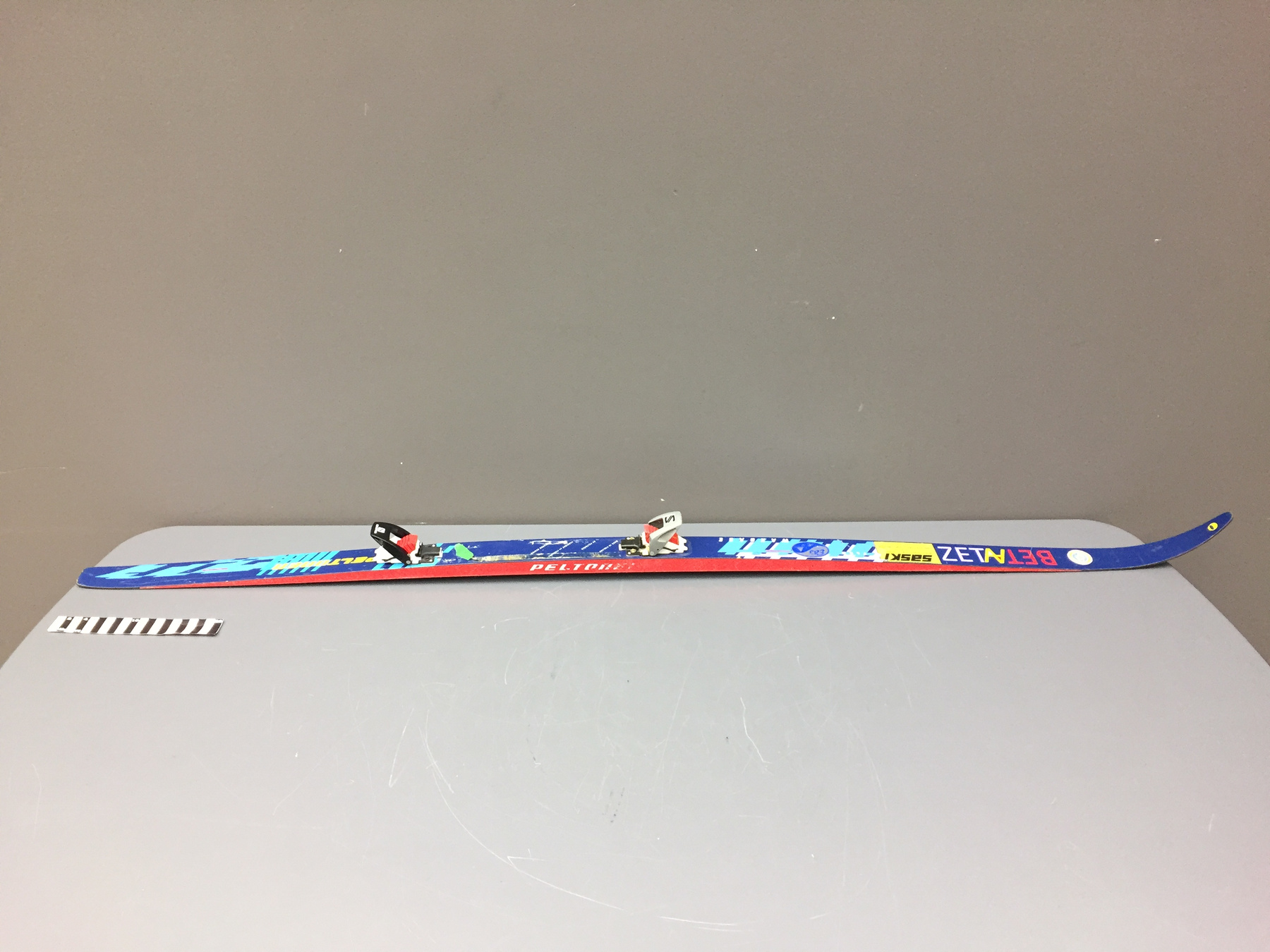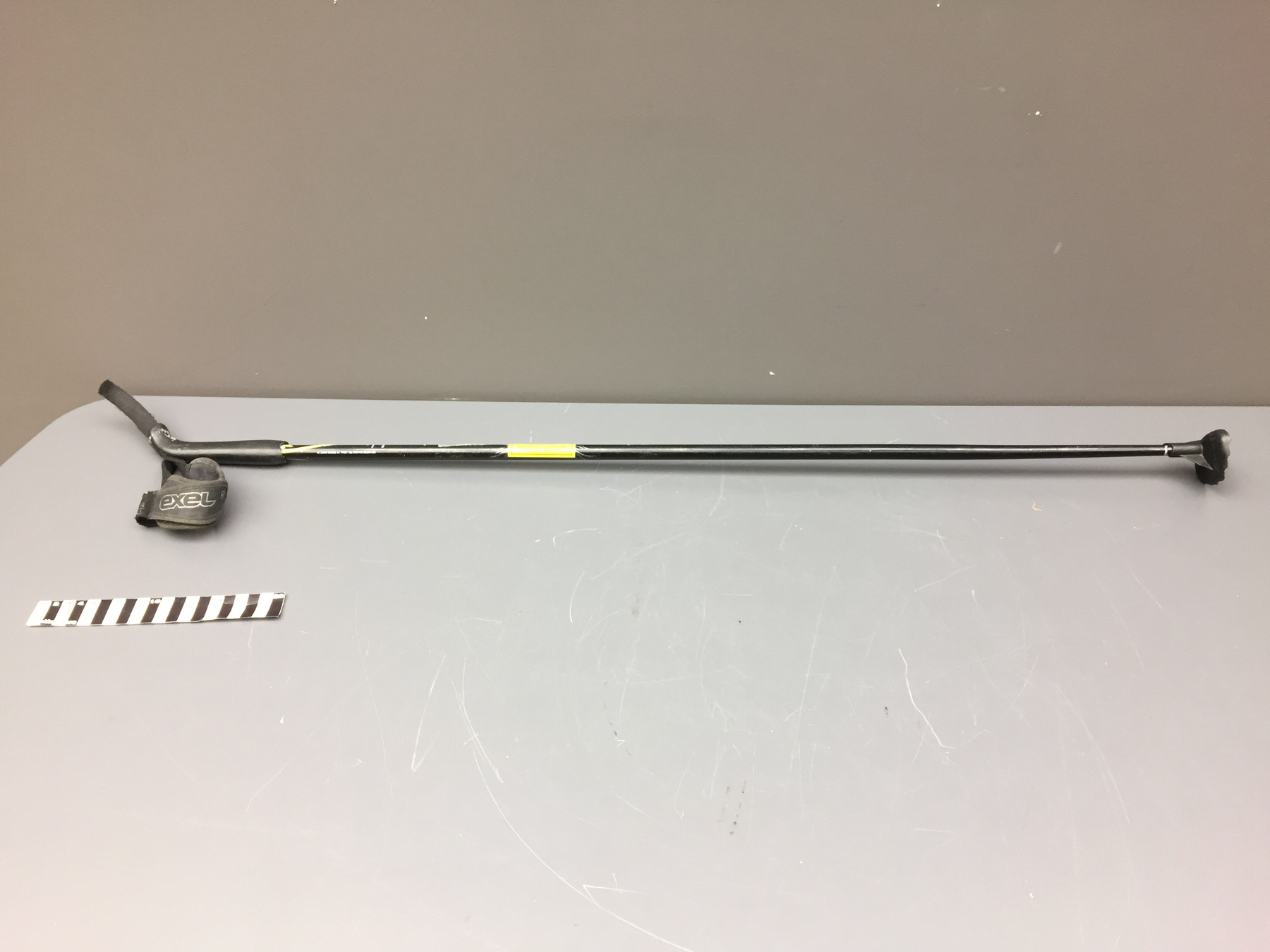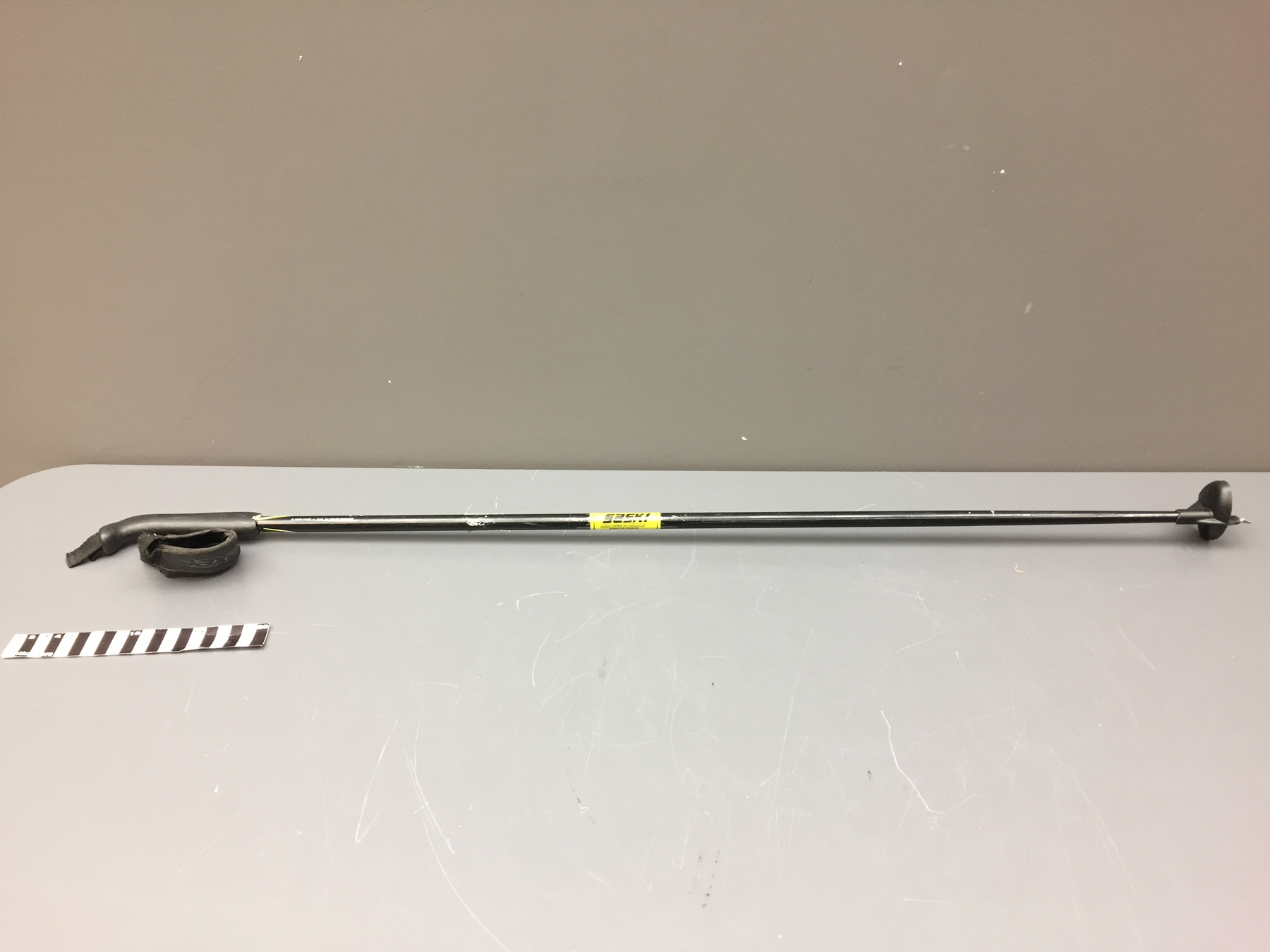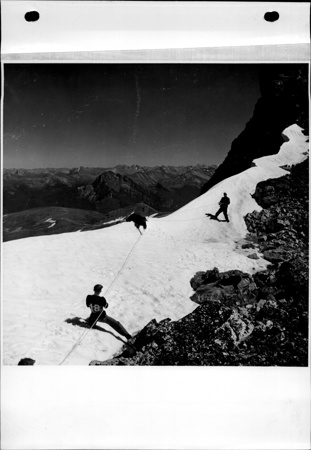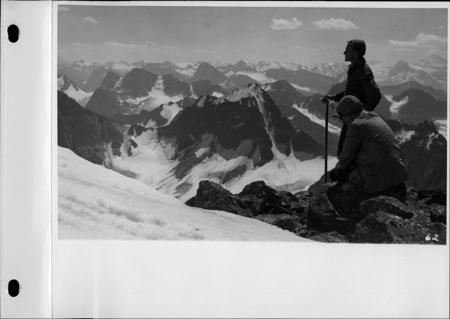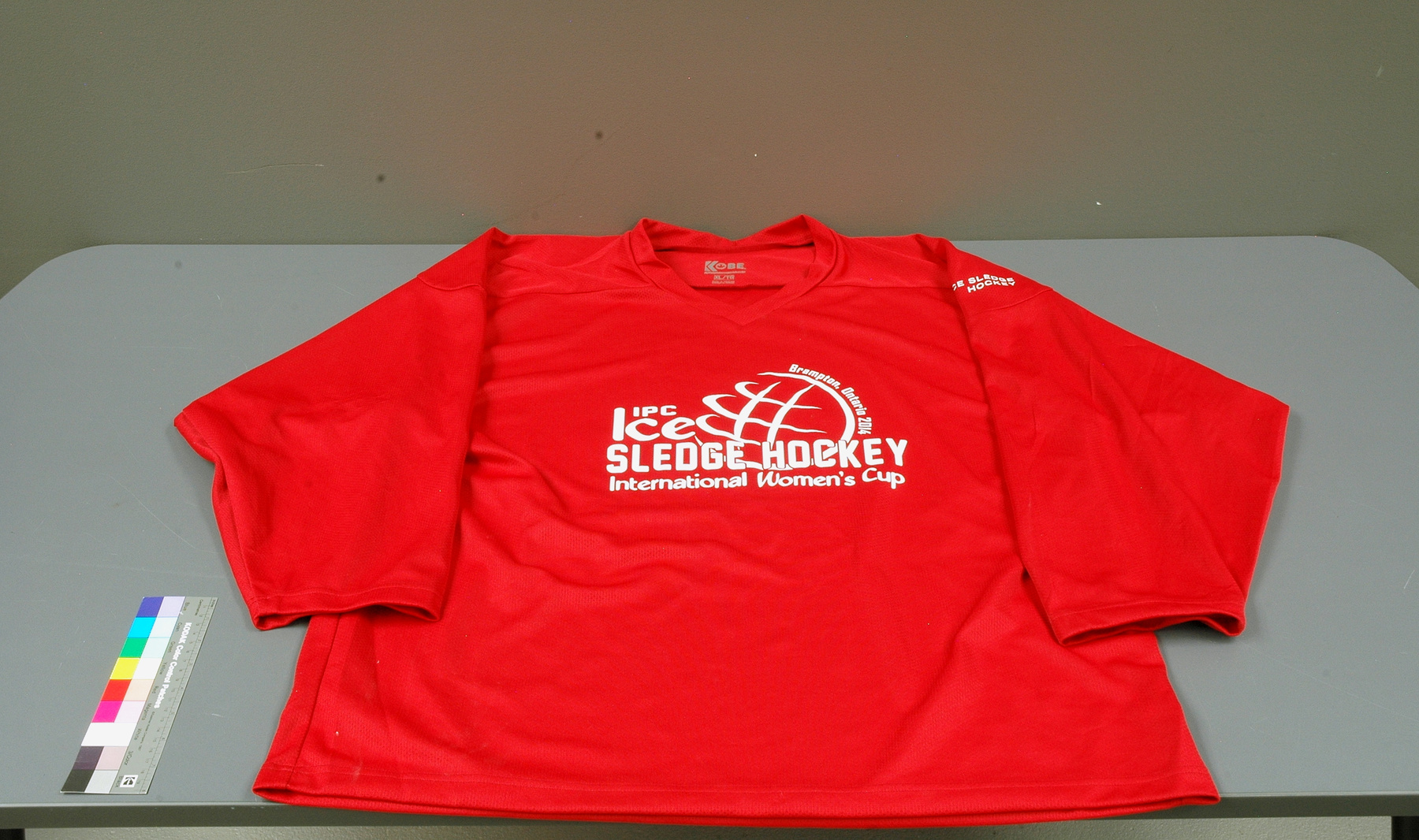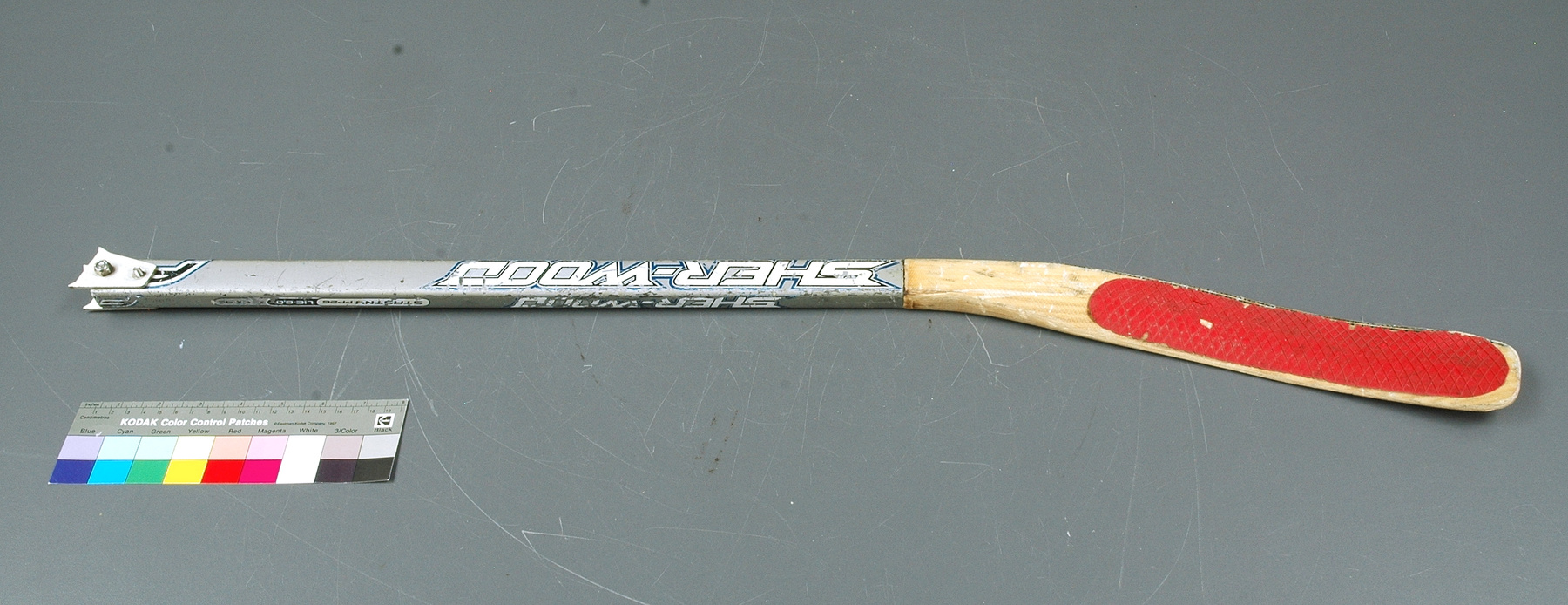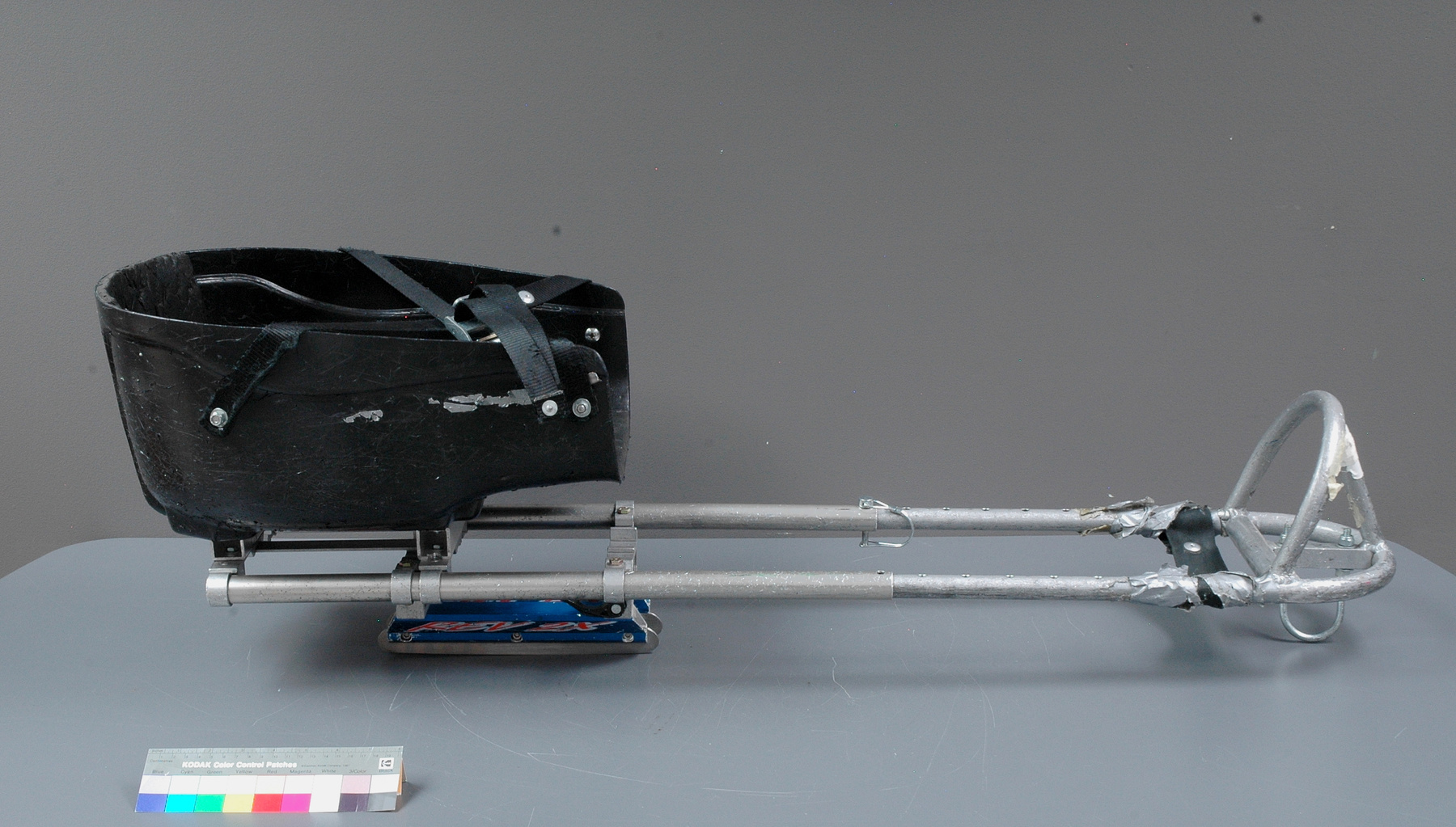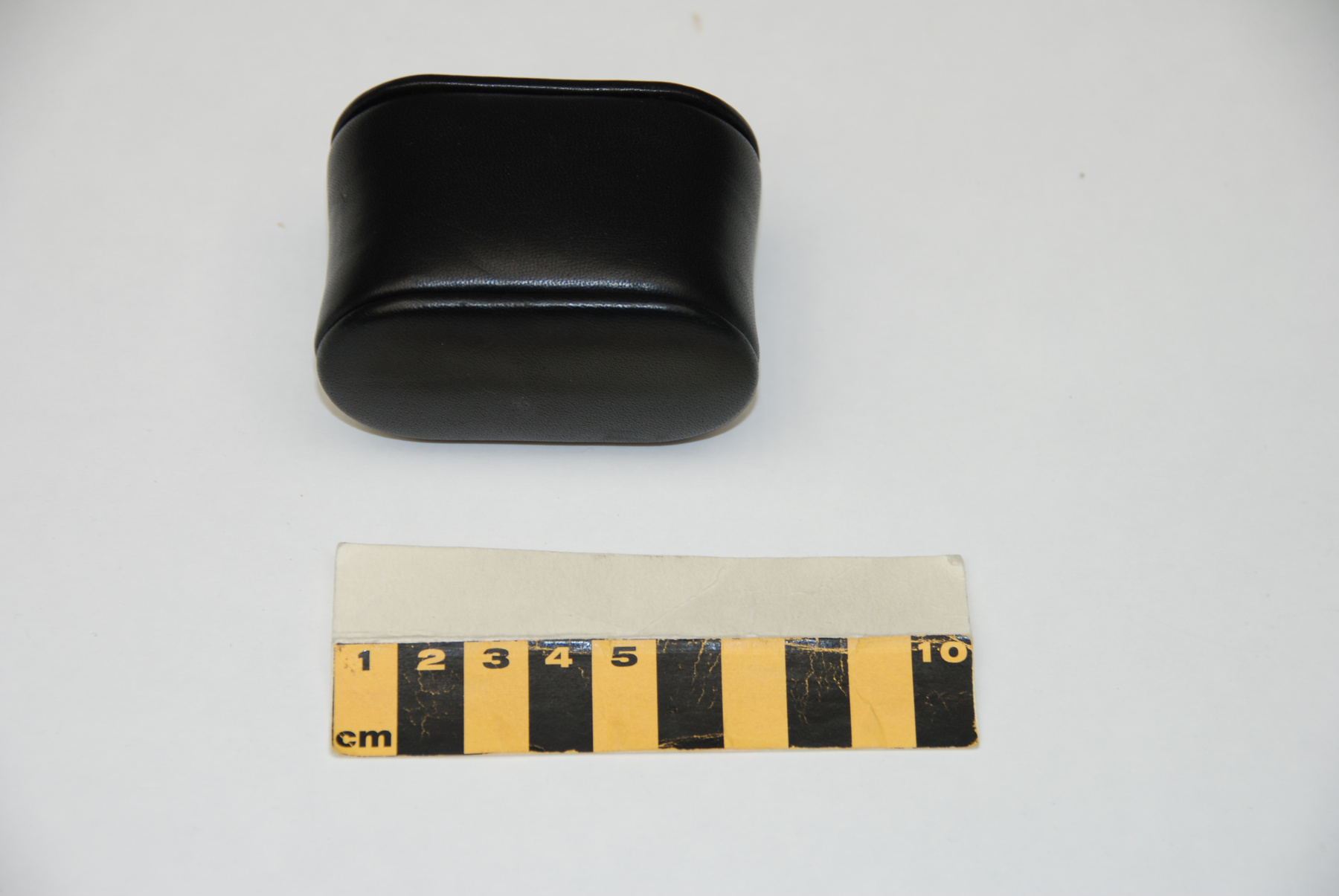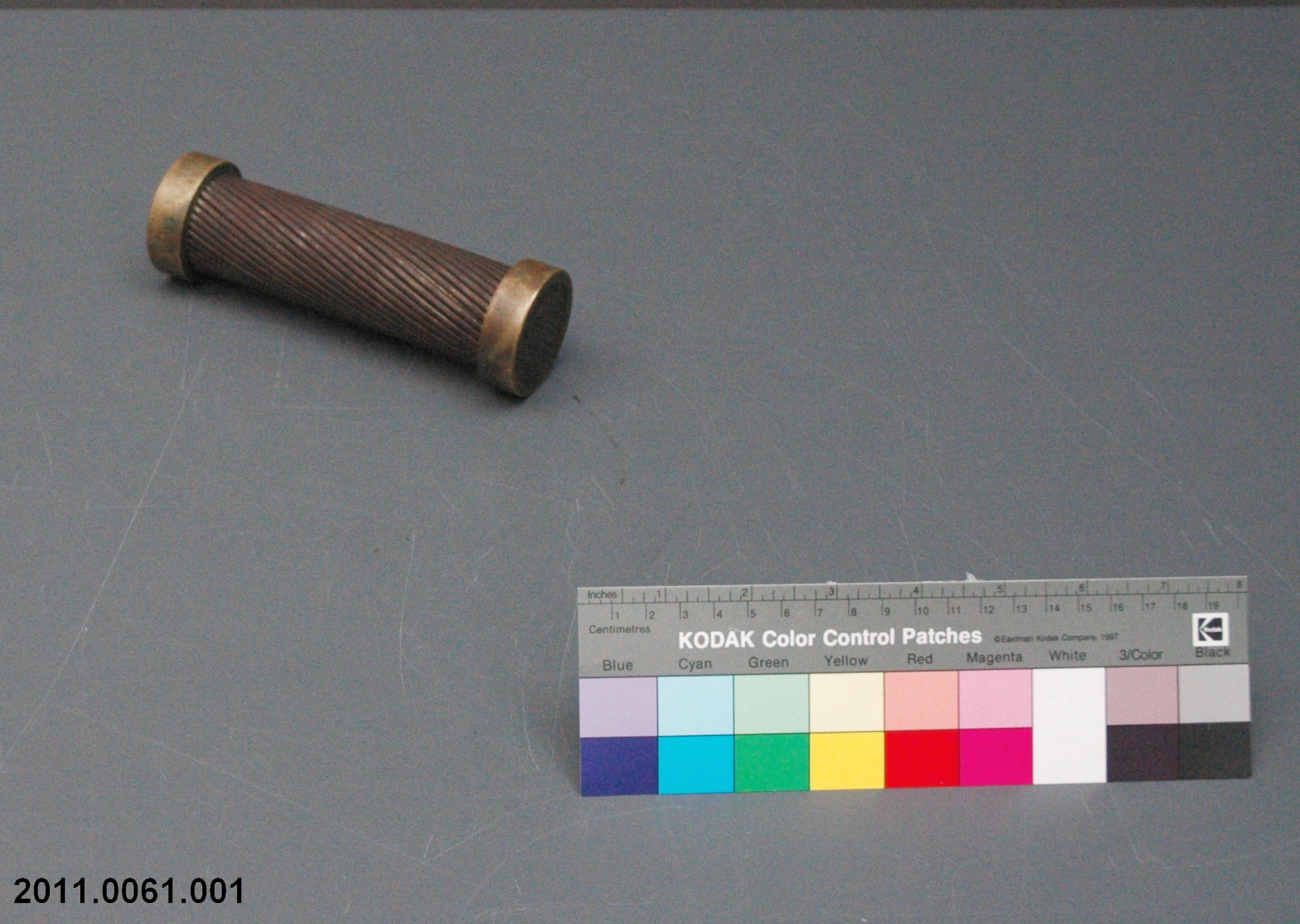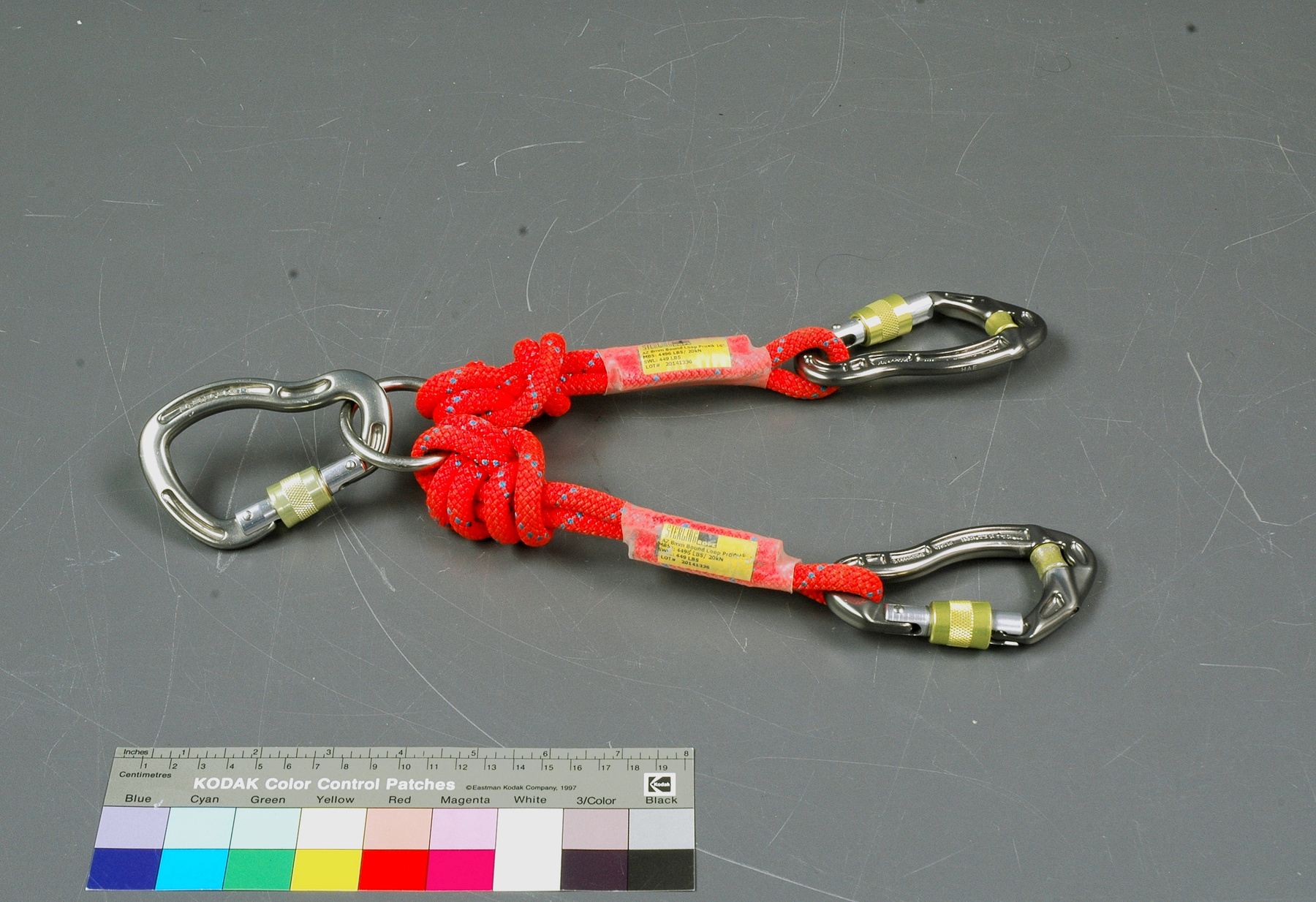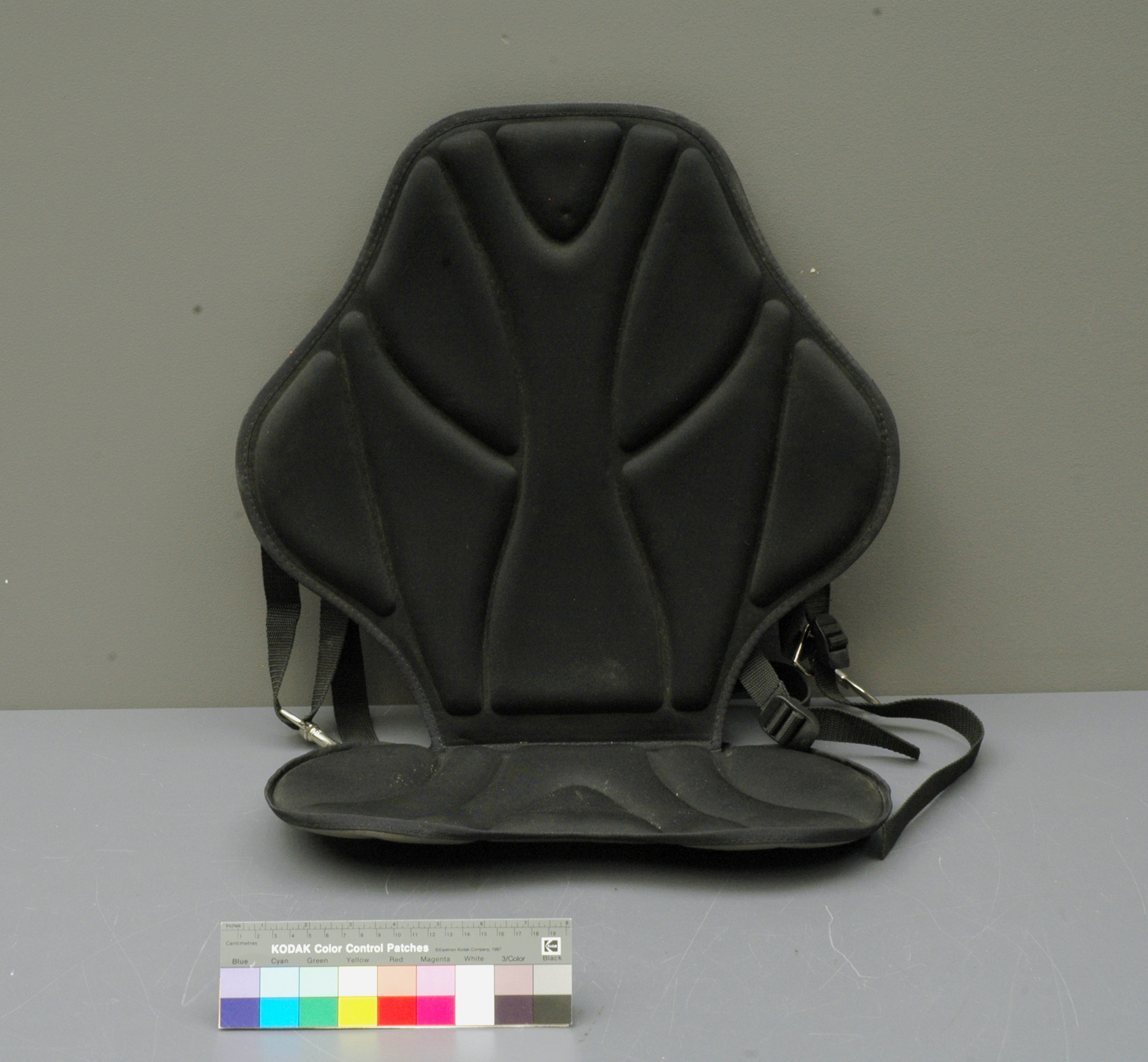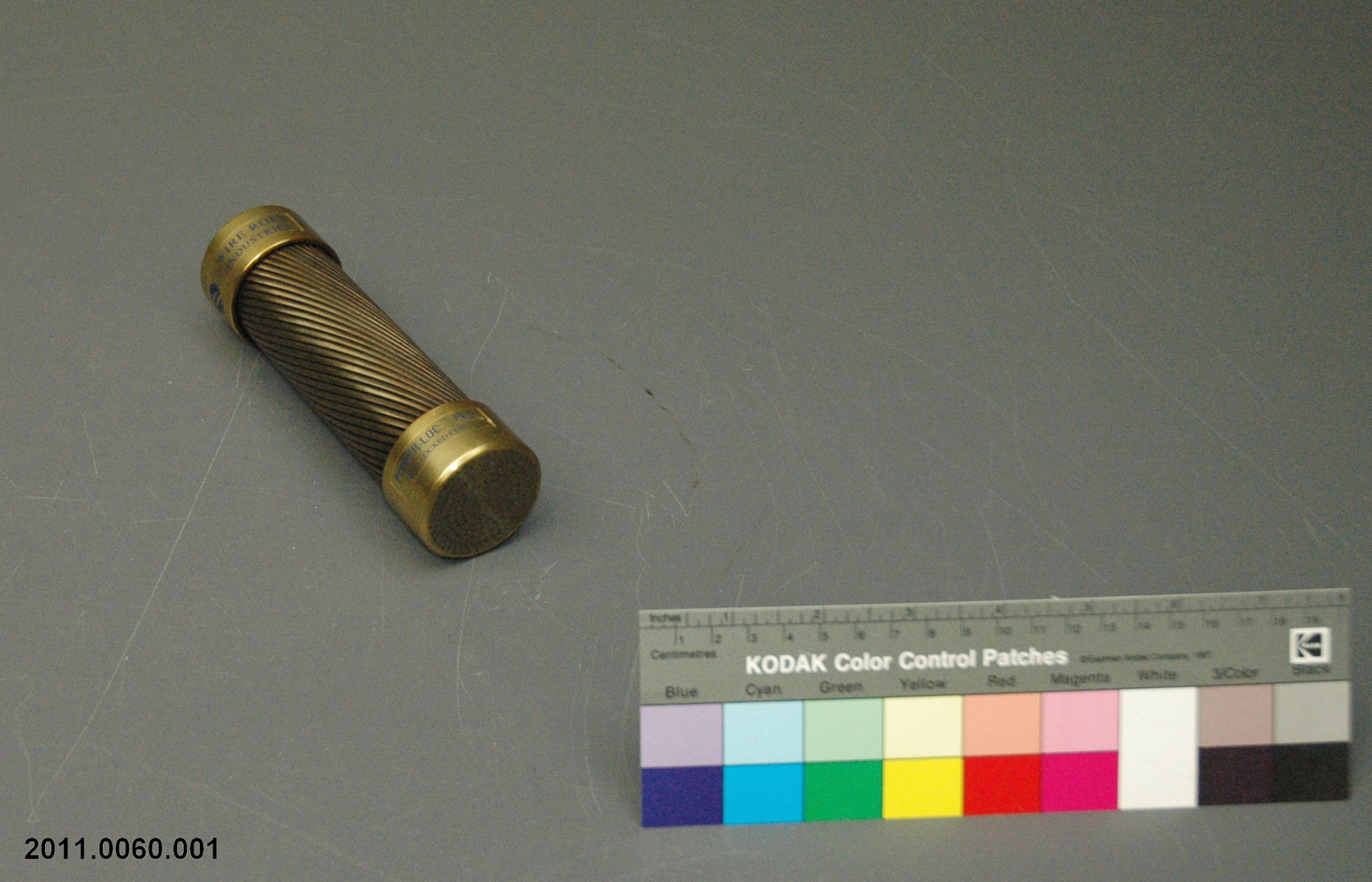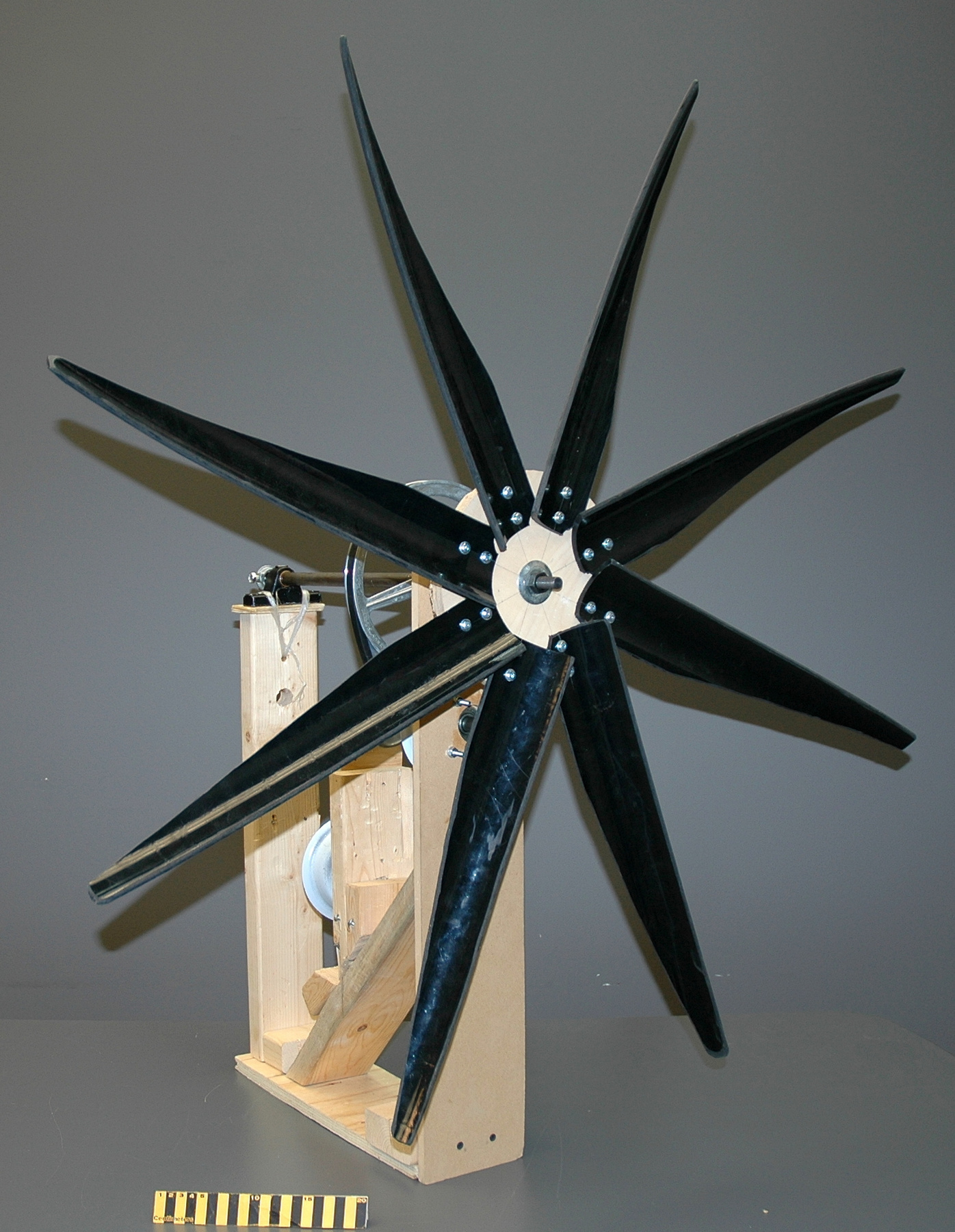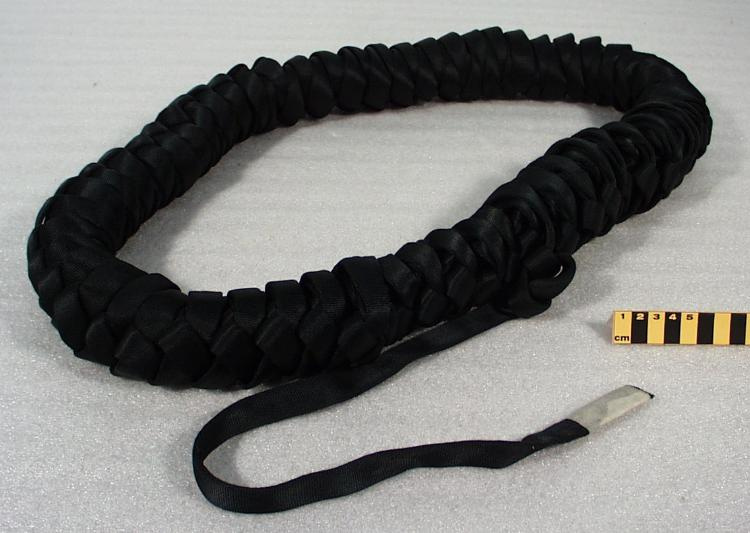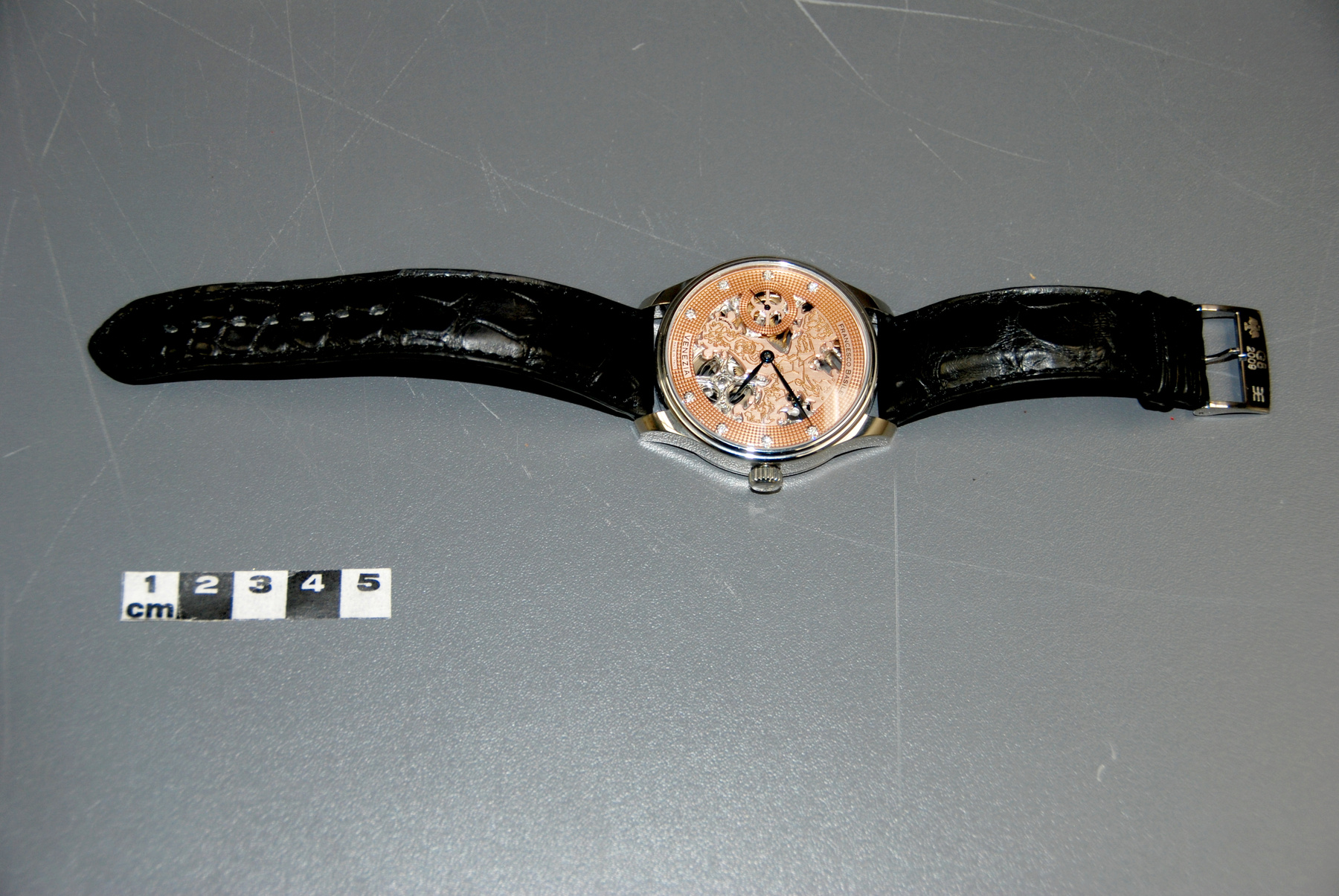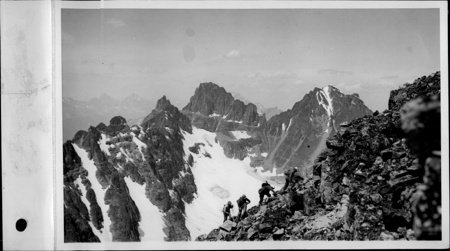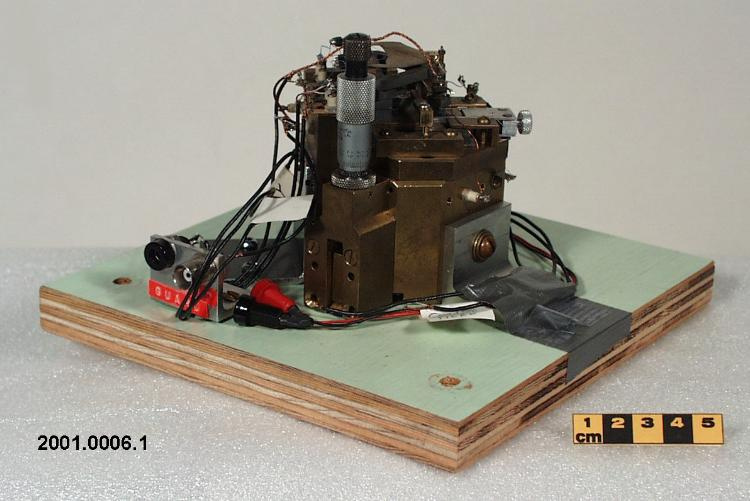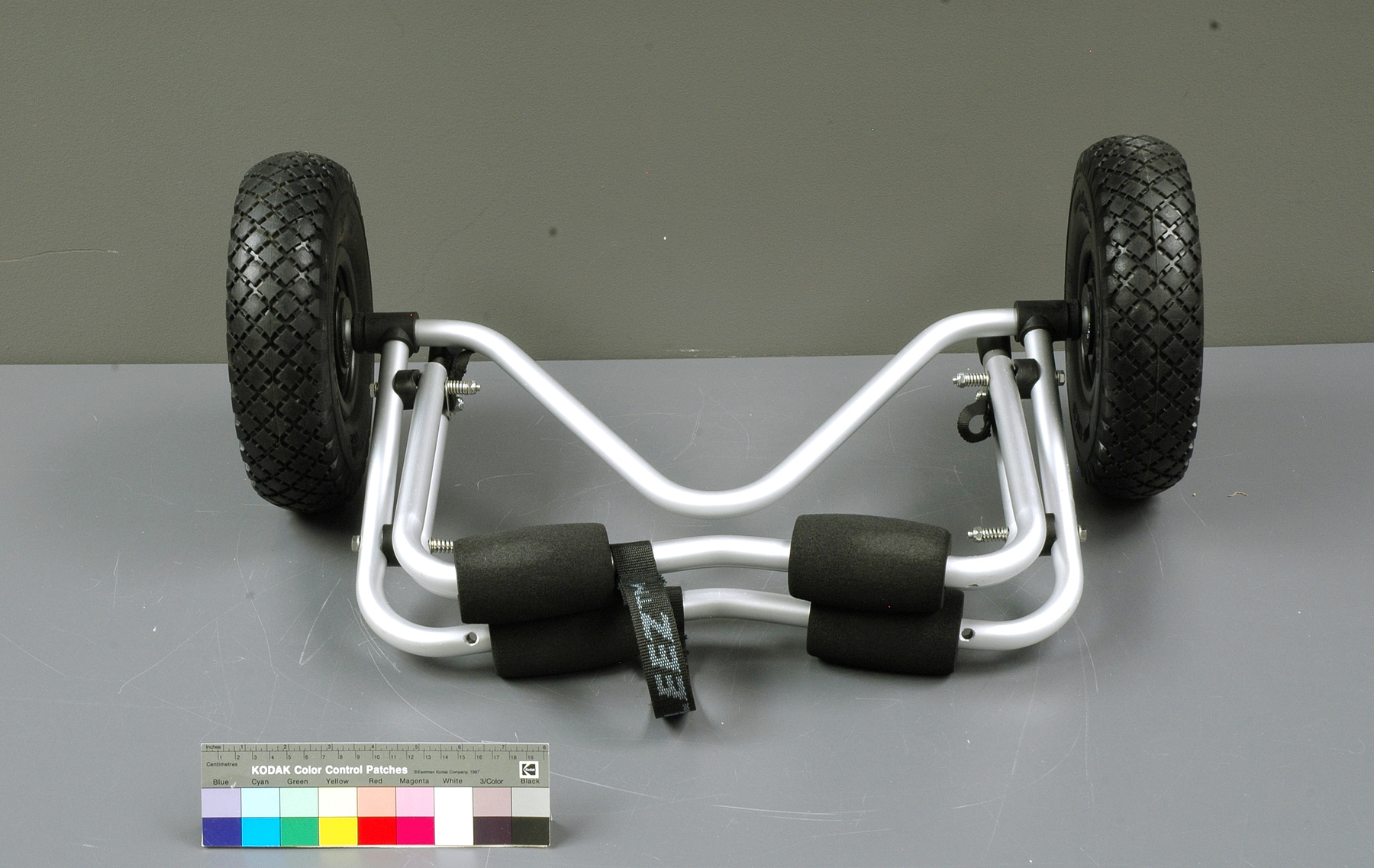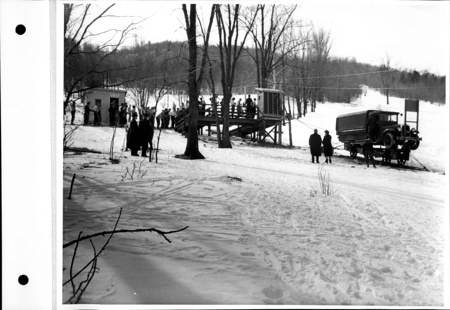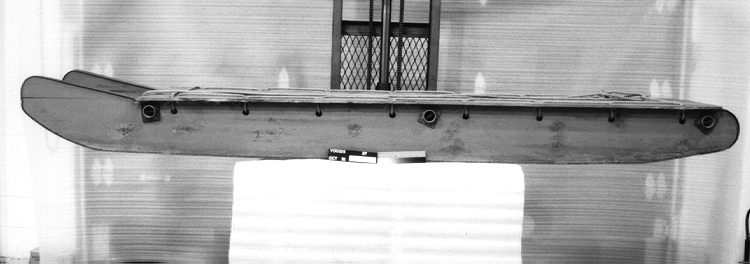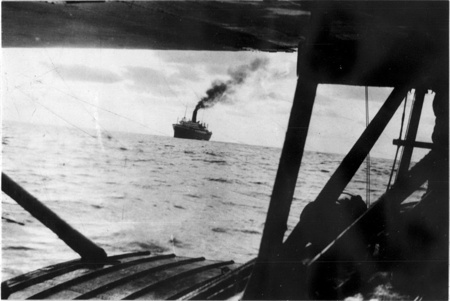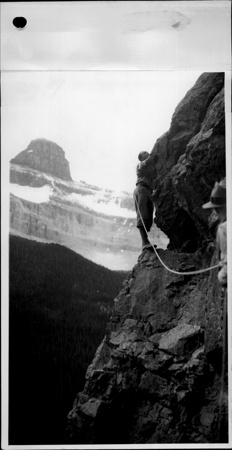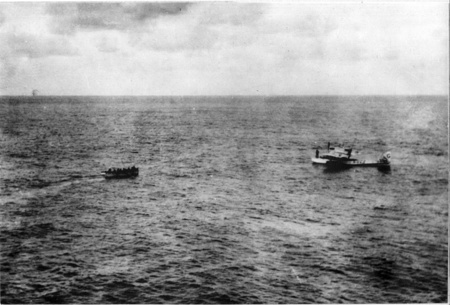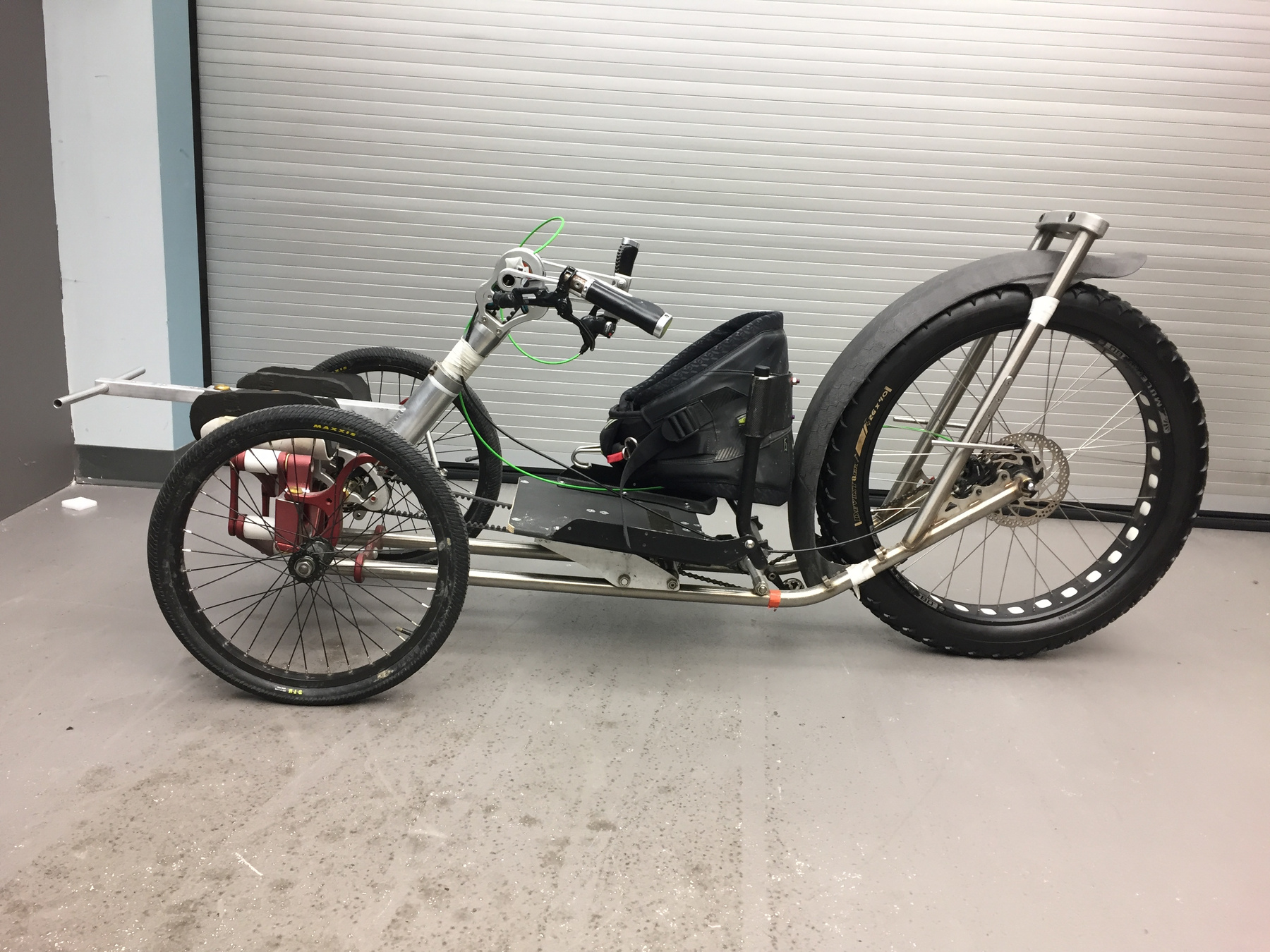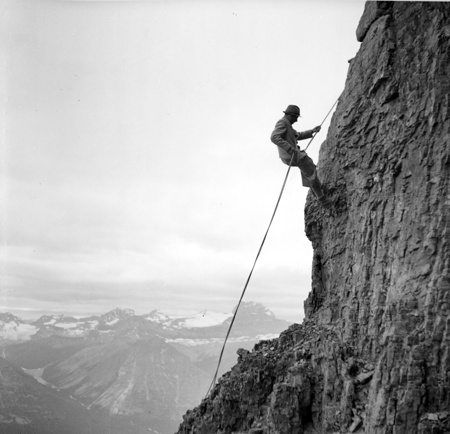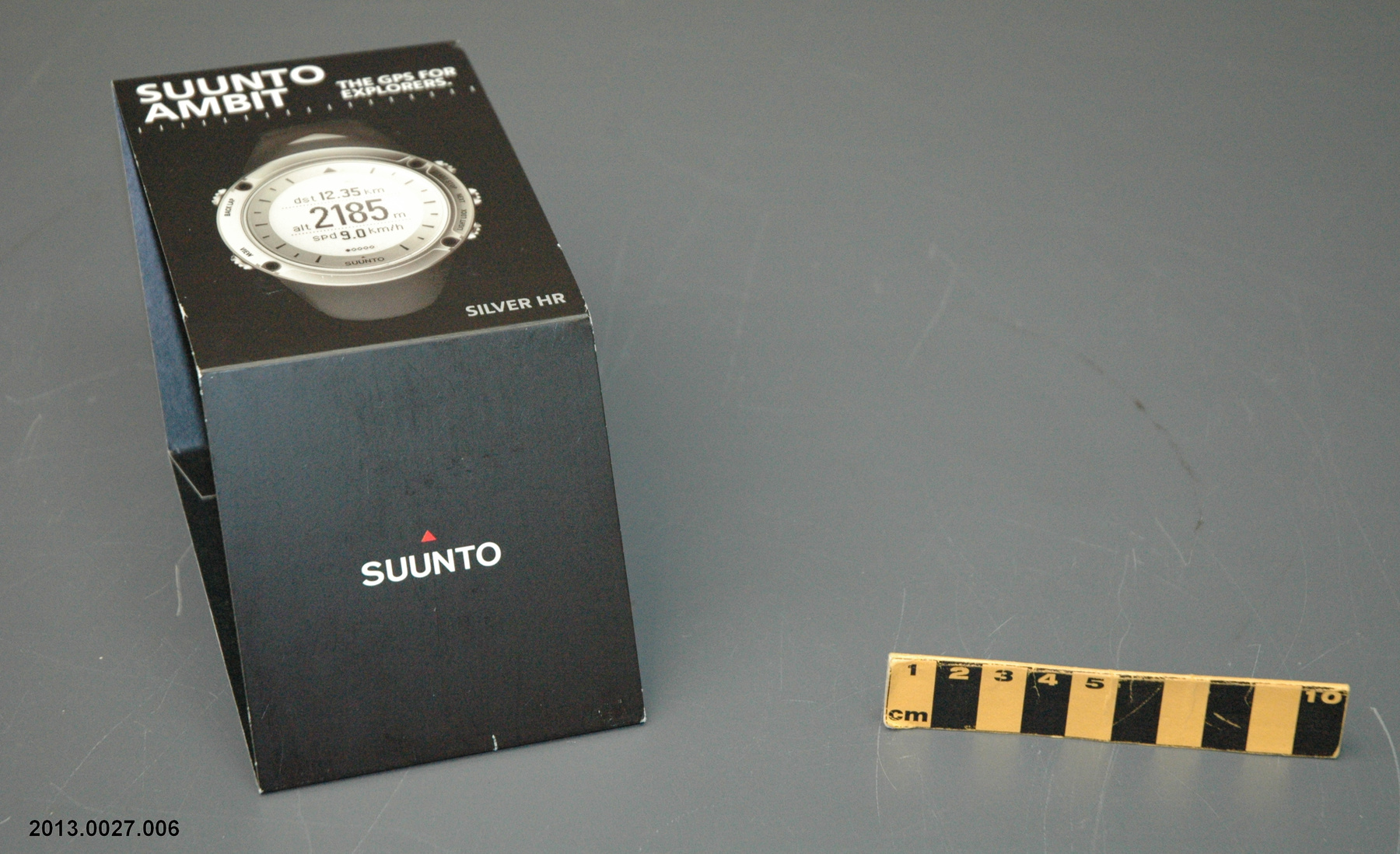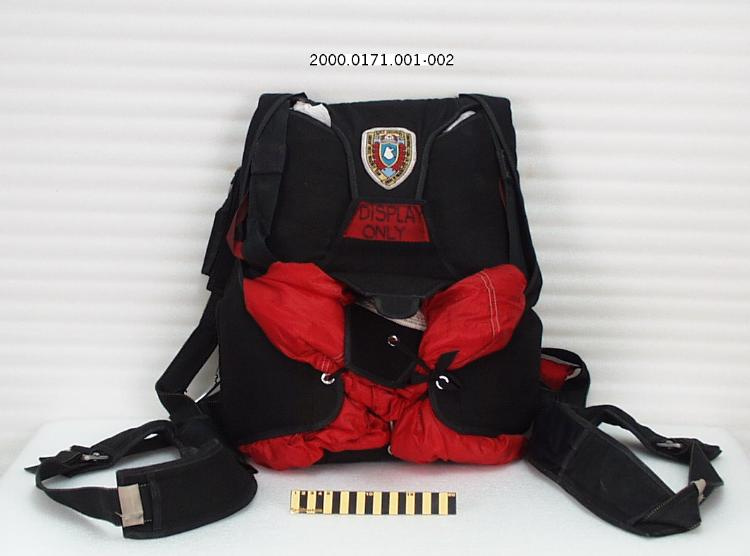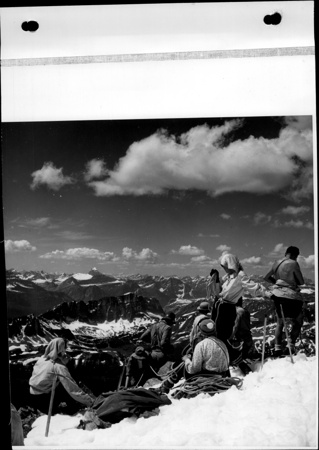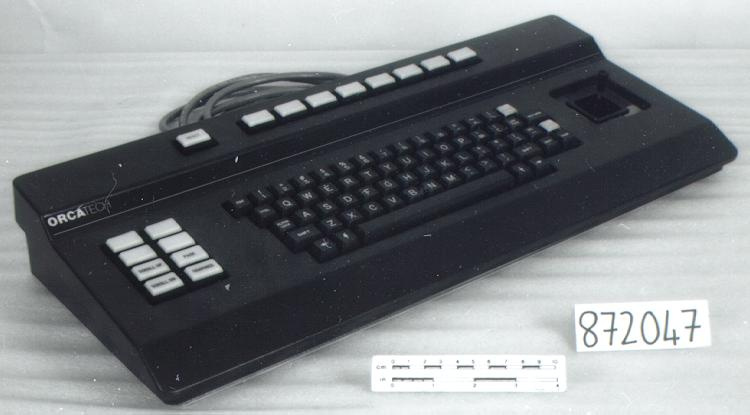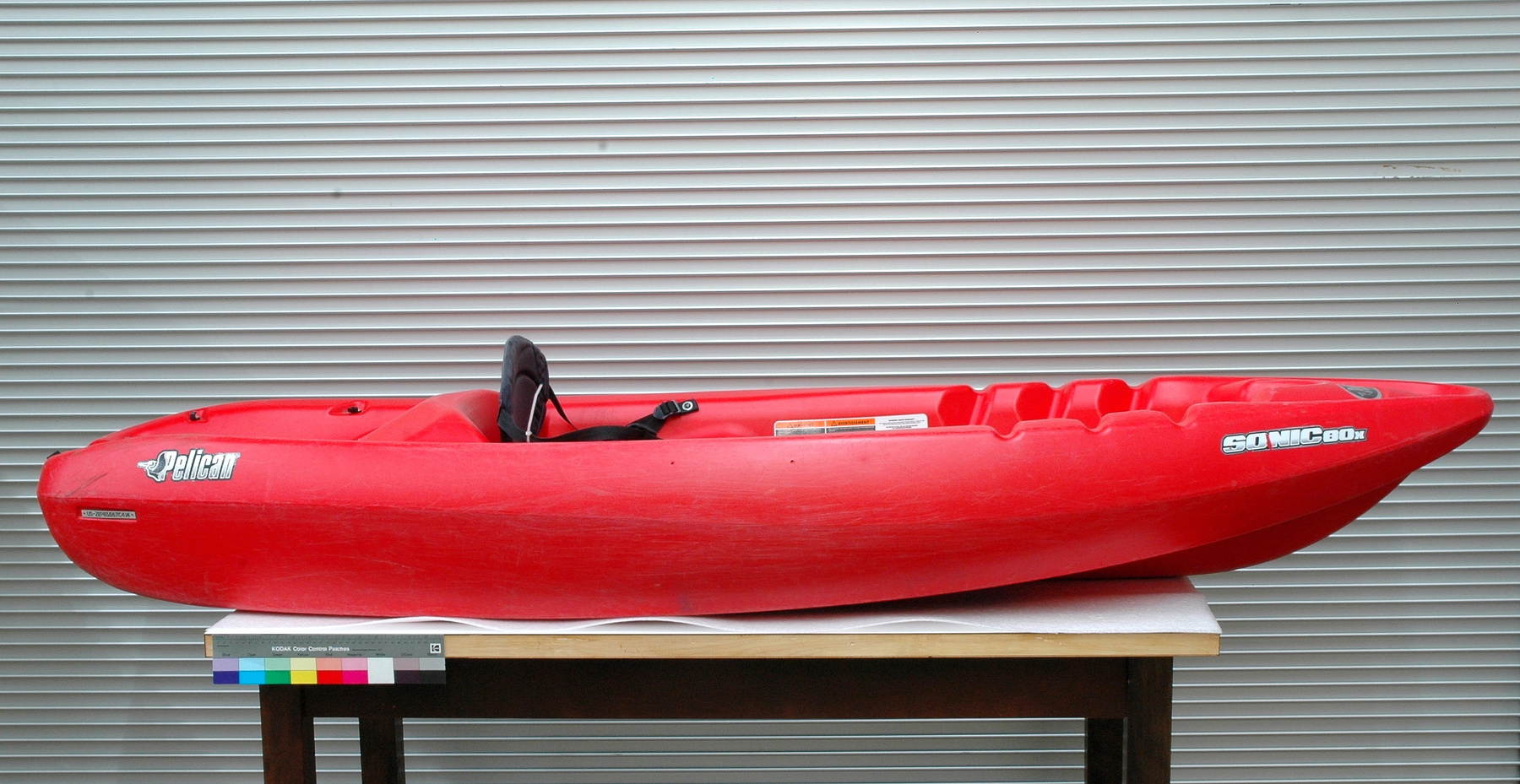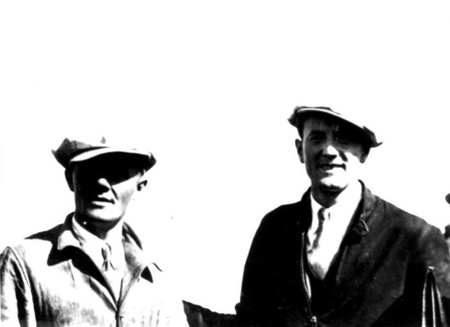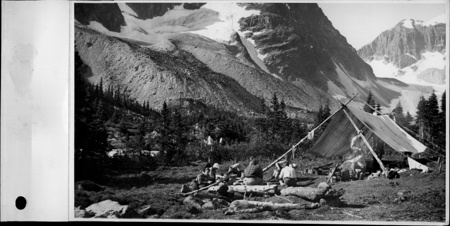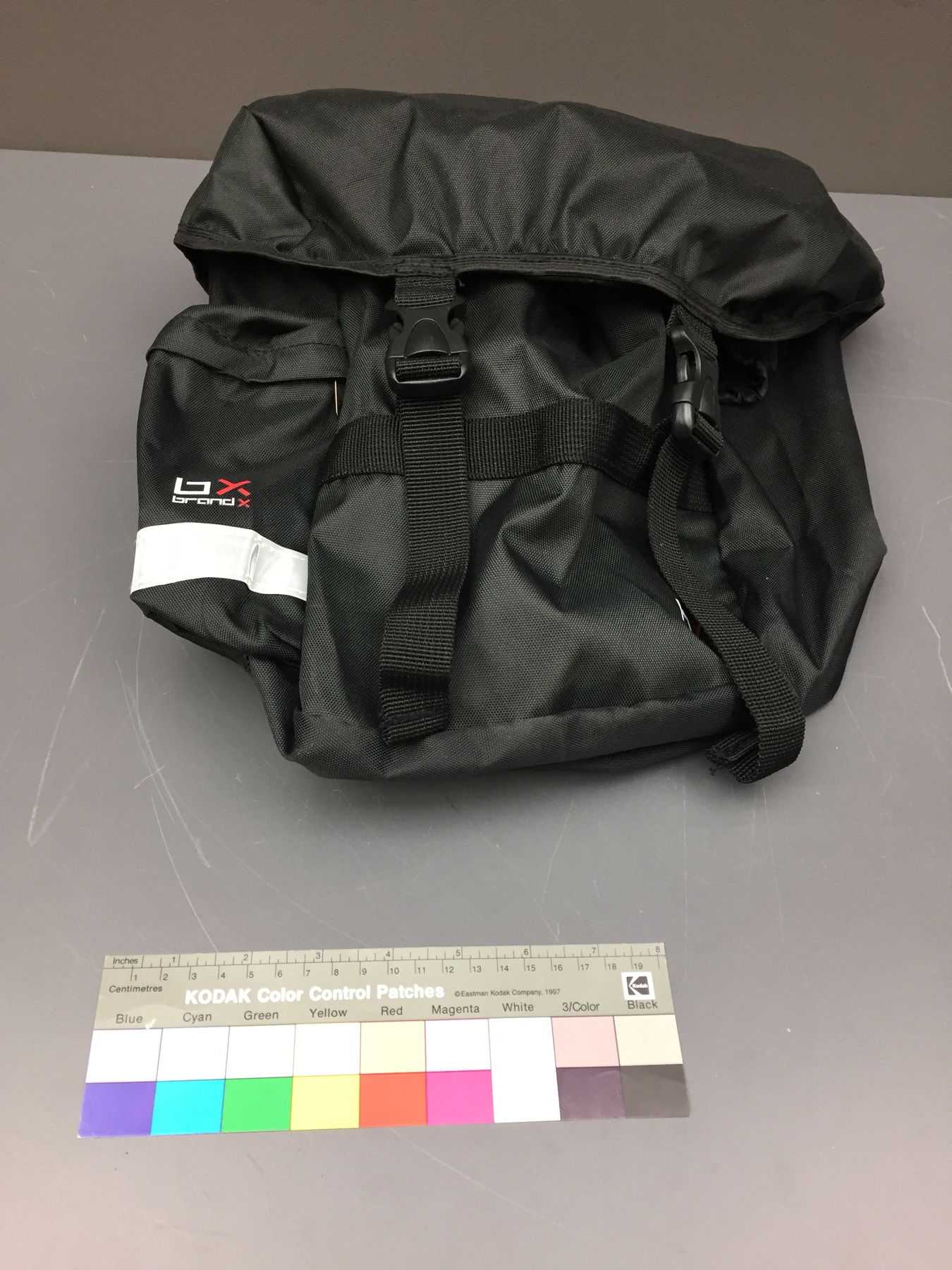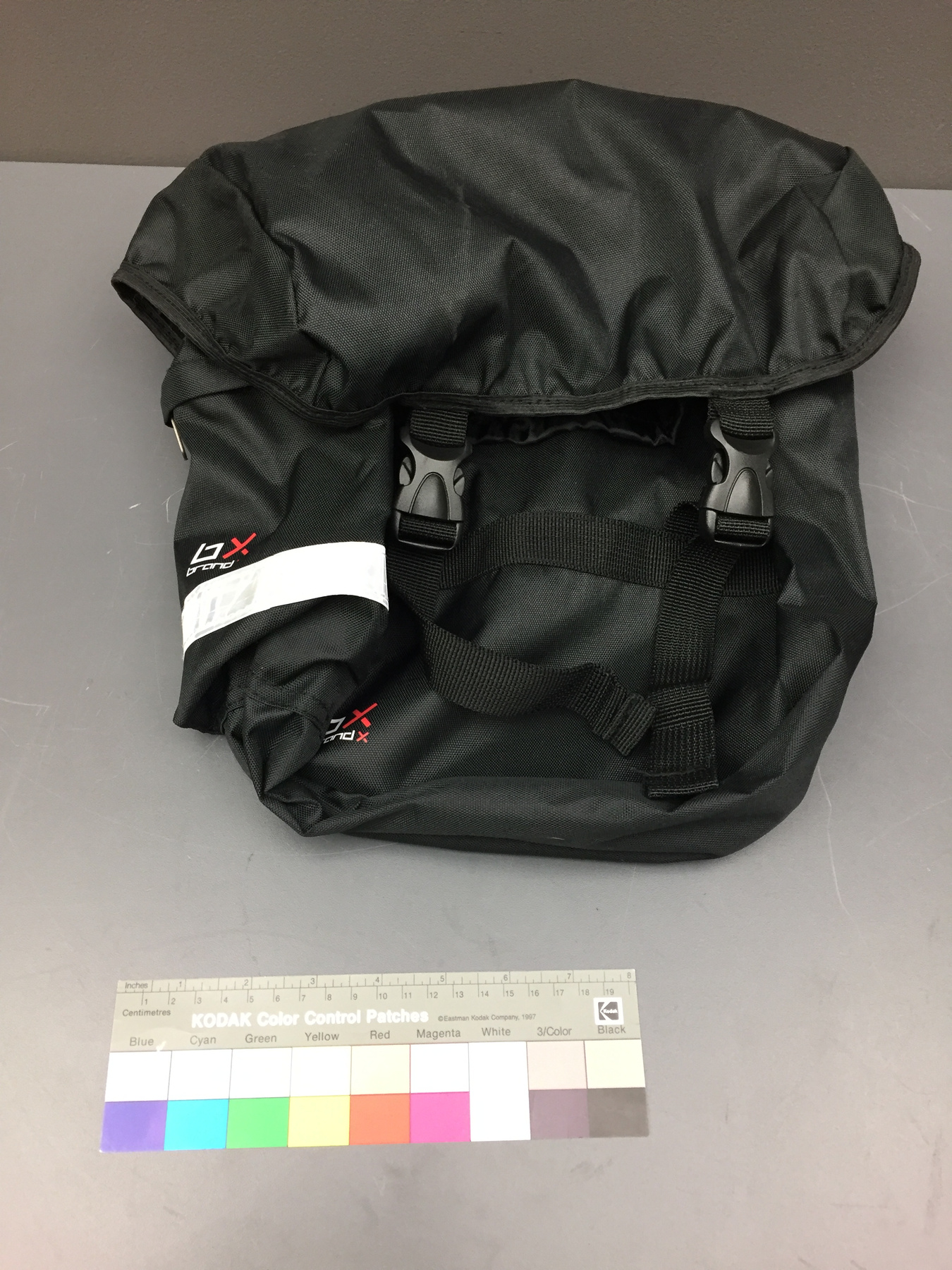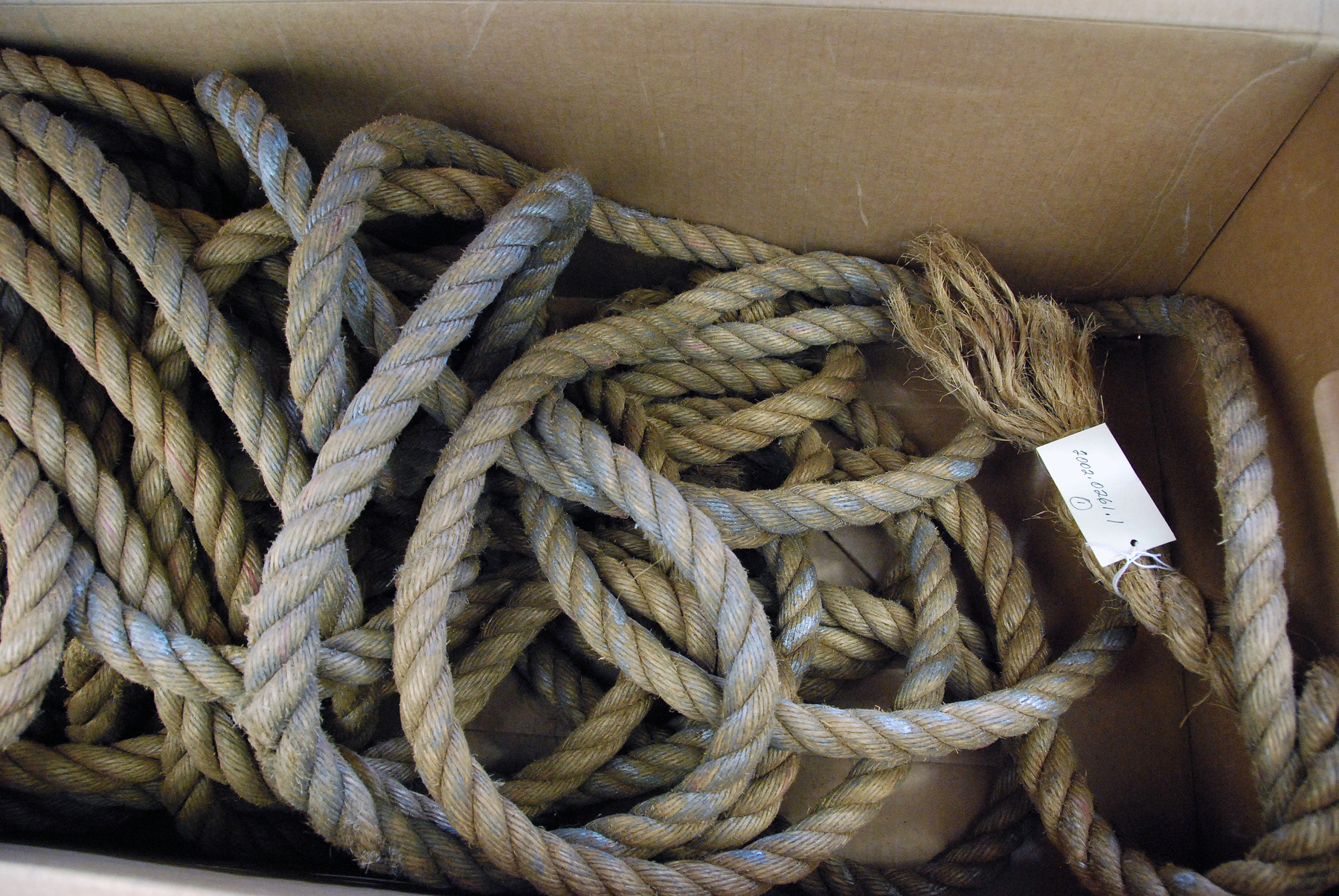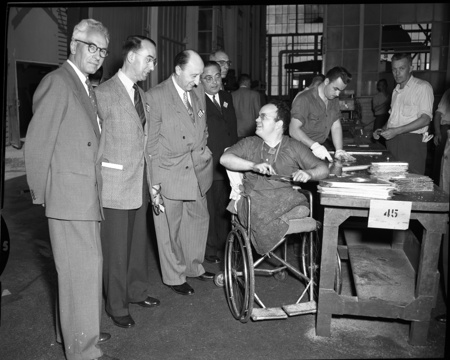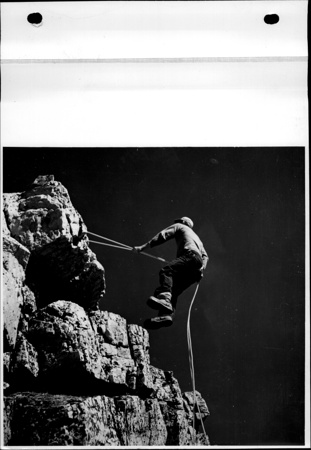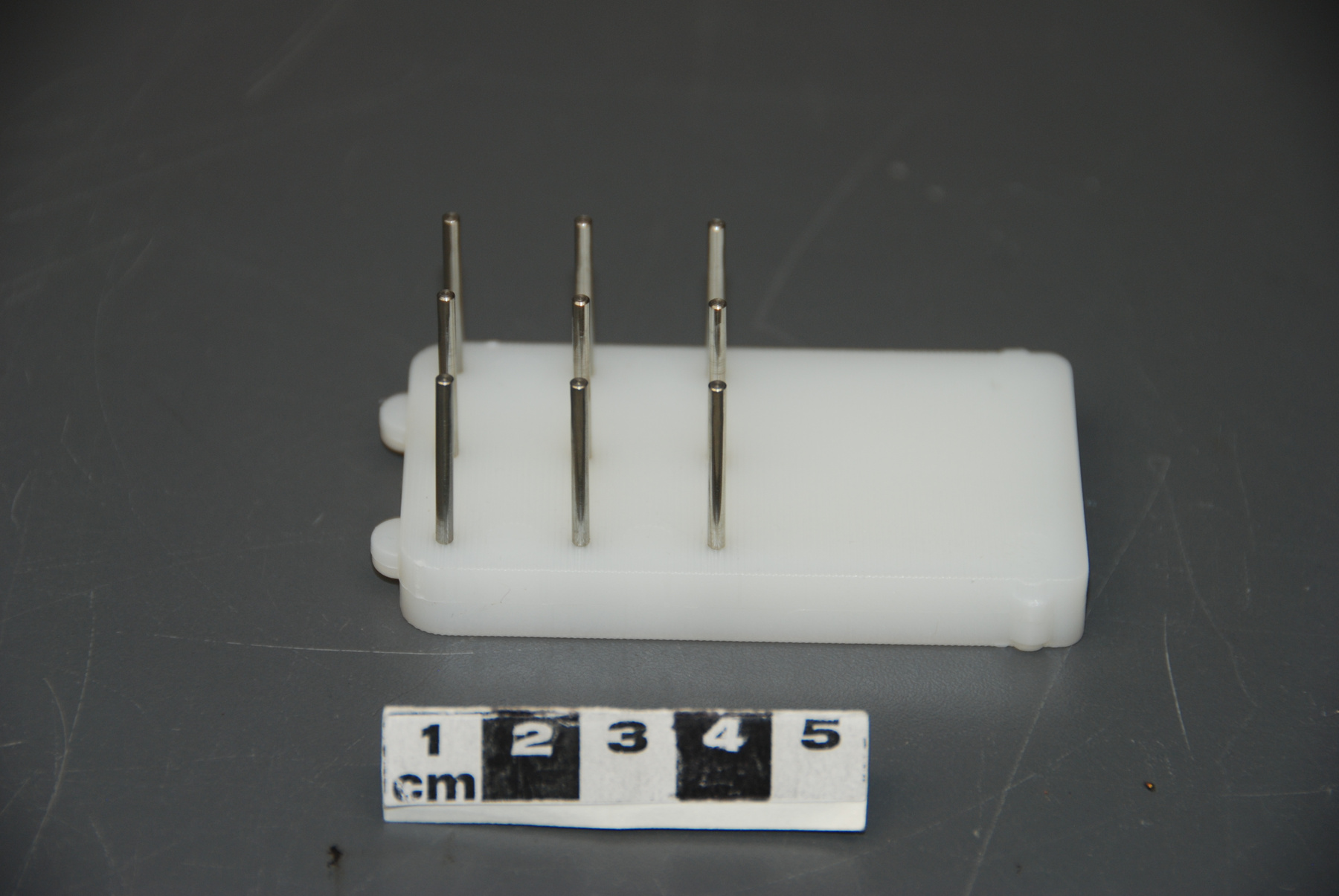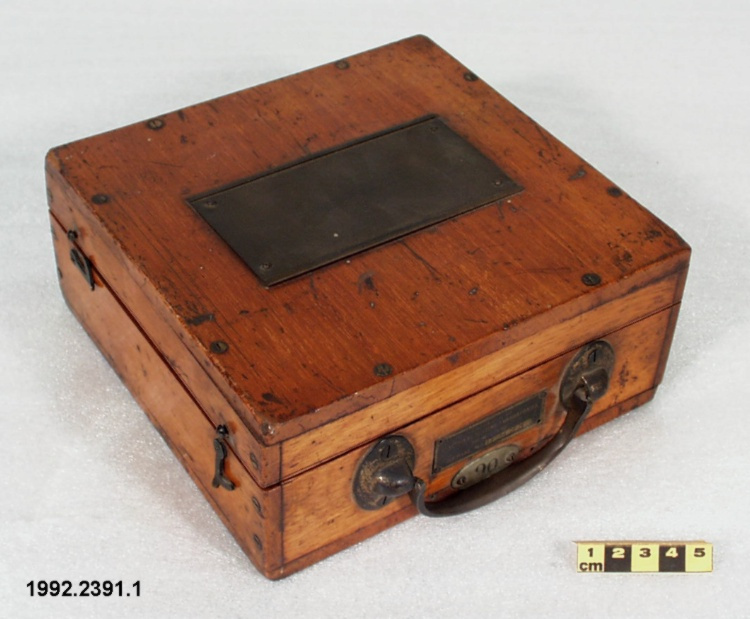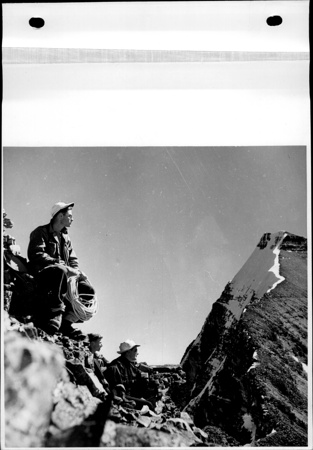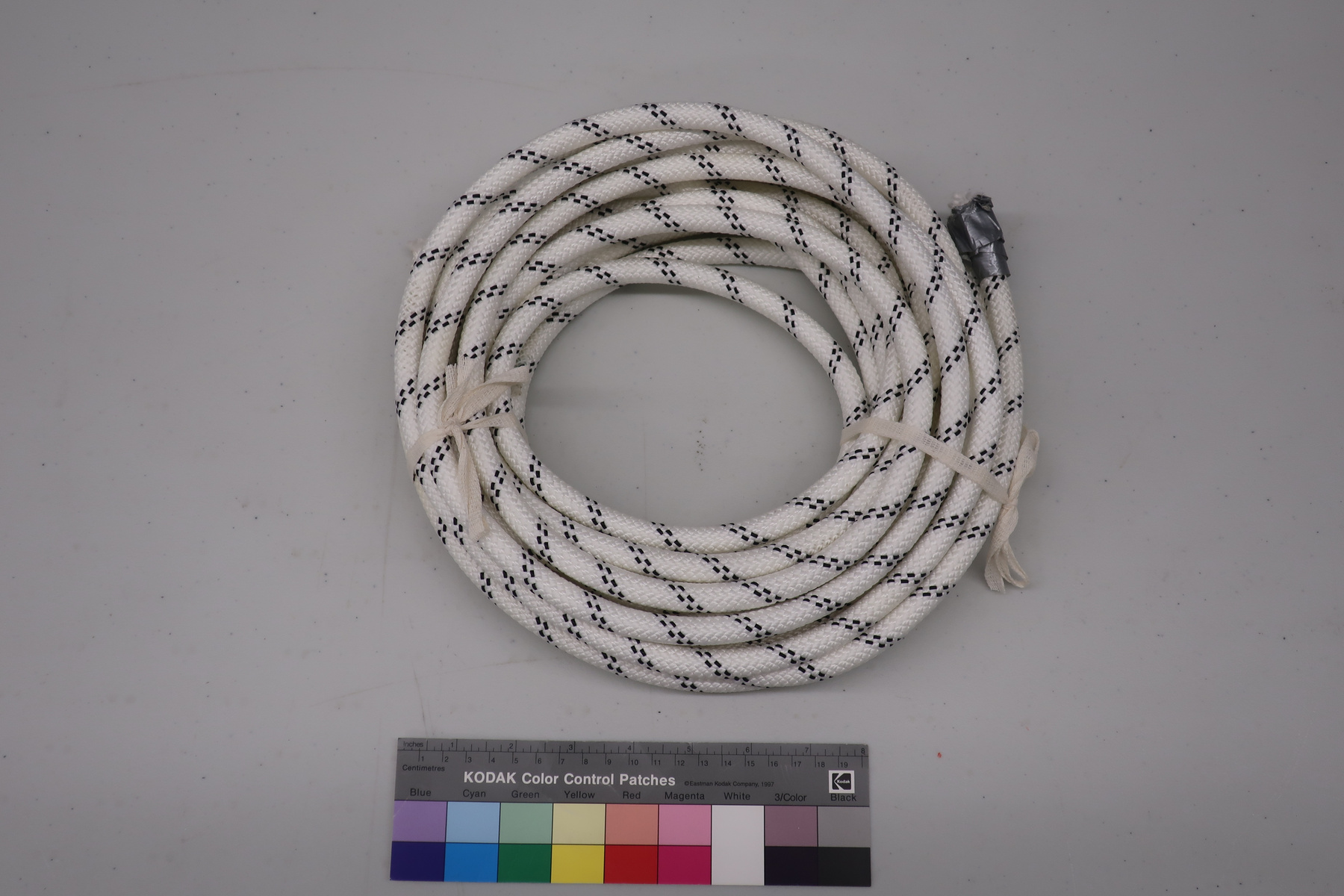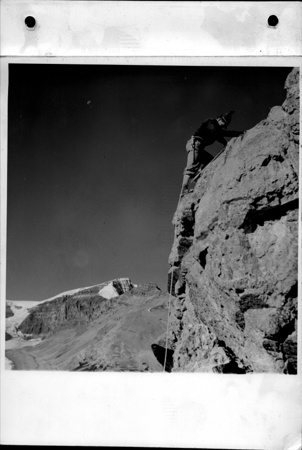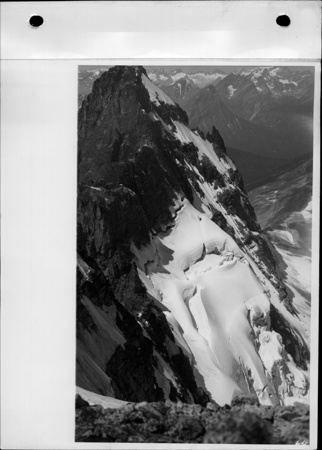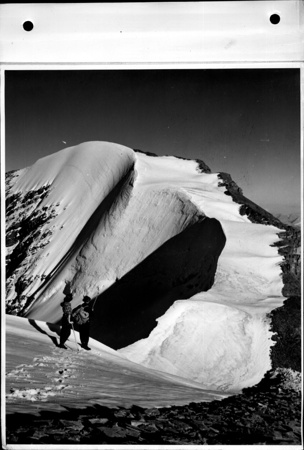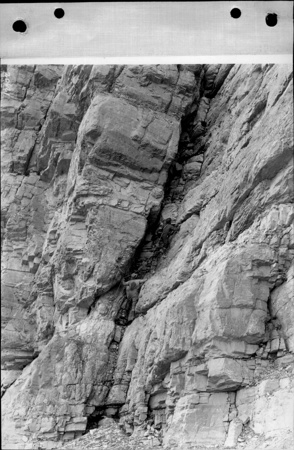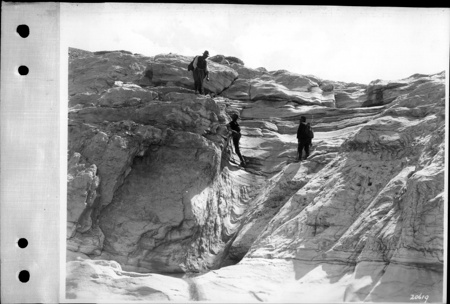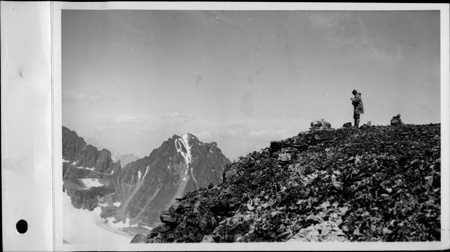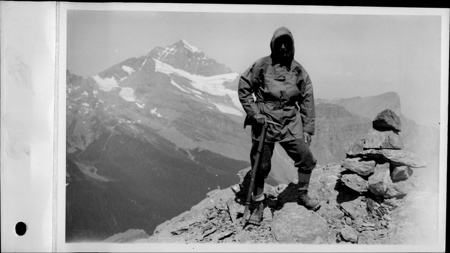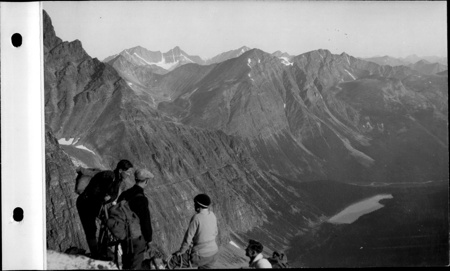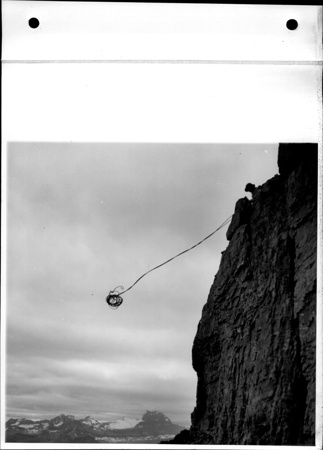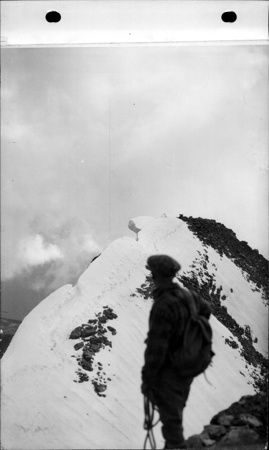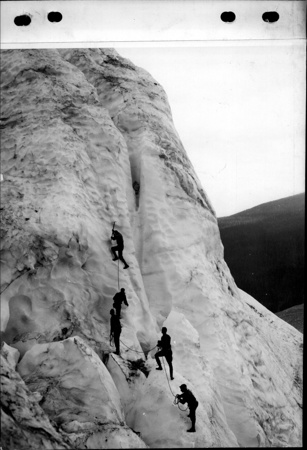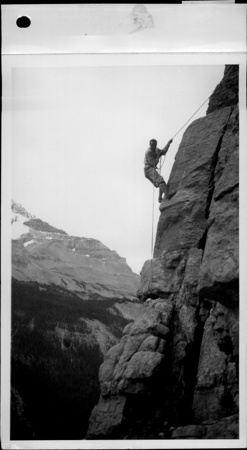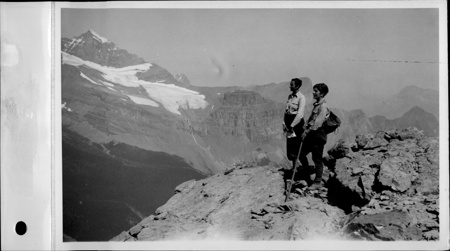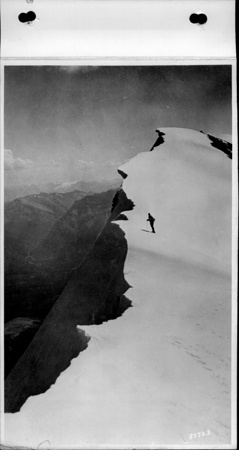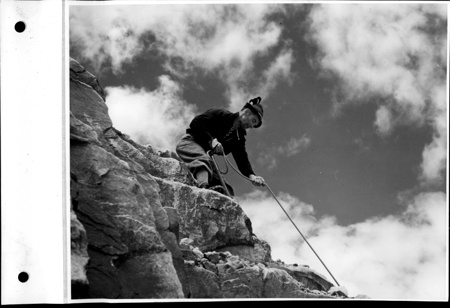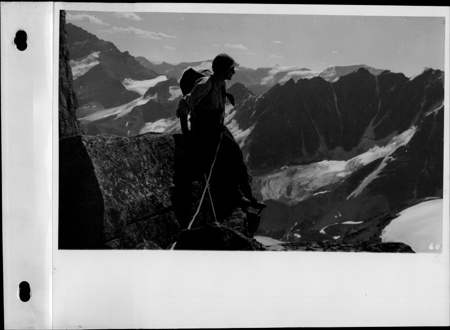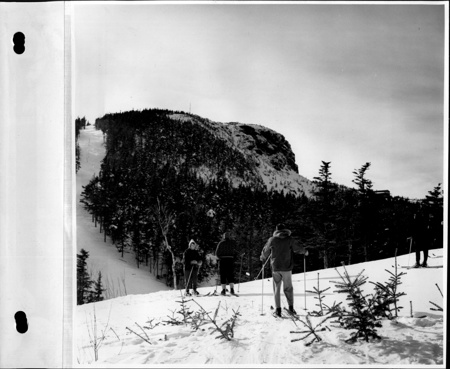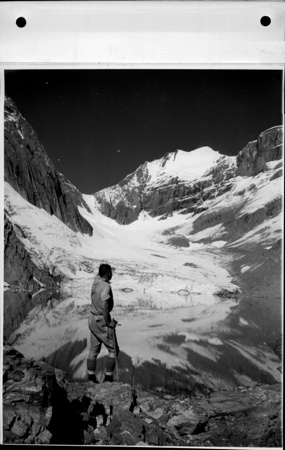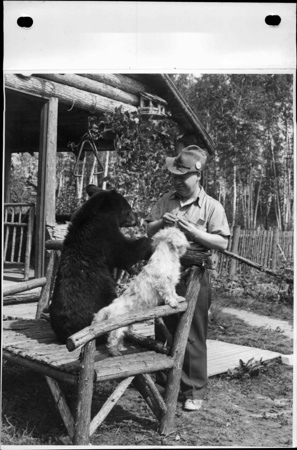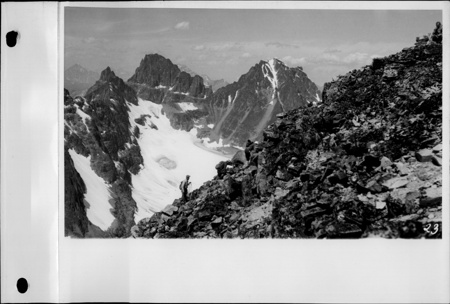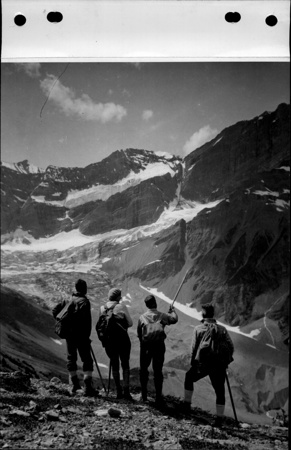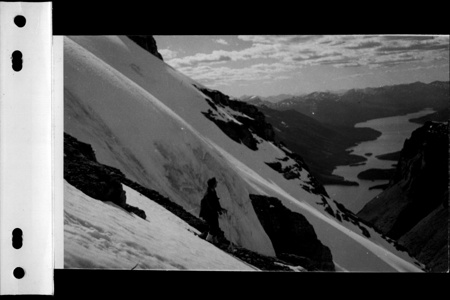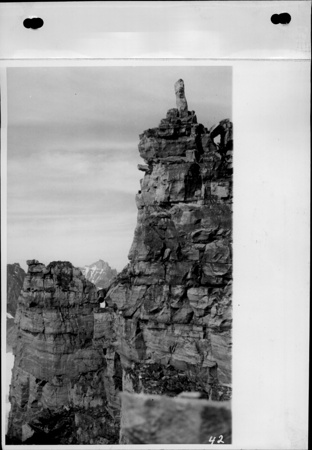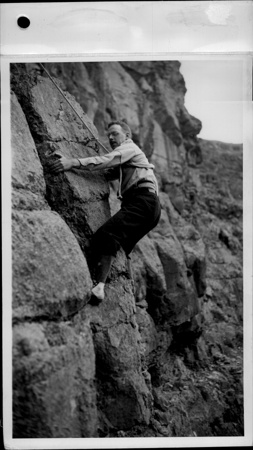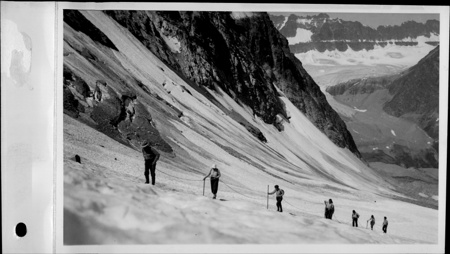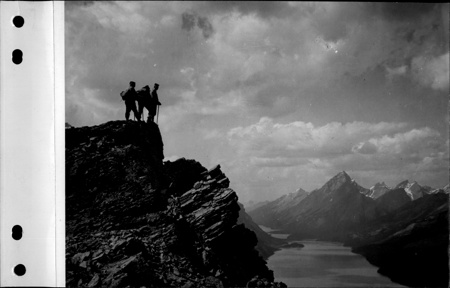Rope
Use this image
Can I reuse this image without permission? Yes
Object images on the Ingenium Collection’s portal have the following Creative Commons license:
Copyright Ingenium / CC BY-NC-ND (Attribution-NonCommercial 4.0 International (CC BY-NC 4.0)
ATTRIBUTE THIS IMAGE
Ingenium,
2016.0014.005
Permalink:
Ingenium is releasing this image under the Creative Commons licensing framework, and encourages downloading and reuse for non-commercial purposes. Please acknowledge Ingenium and cite the artifact number.
DOWNLOAD IMAGEPURCHASE THIS IMAGE
This image is free for non-commercial use.
For commercial use, please consult our Reproduction Fees and contact us to purchase the image.
- OBJECT TYPE
- climbing
- DATE
- 2005
- ARTIFACT NUMBER
- 2016.0014.005
- MANUFACTURER
- Unknown
- MODEL
- Unknown
- LOCATION
- Unknown
More Information
General Information
- Serial #
- N/A
- Part Number
- 5
- Total Parts
- 12
- AKA
- N/A
- Patents
- N/A
- General Description
- Synthetic (possible) rope
Dimensions
Note: These reflect the general size for storage and are not necessarily representative of the object's true dimensions.
- Length
- 34.0 cm
- Width
- 33.0 cm
- Height
- 9.2 cm
- Thickness
- N/A
- Weight
- N/A
- Diameter
- N/A
- Volume
- N/A
Lexicon
- Group
- Non-motorized Ground Transportation
- Category
- Assistive technologies
- Sub-Category
- N/A
Manufacturer
- AKA
- Unknown
- Country
- Unknown
- State/Province
- Unknown
- City
- Unknown
Context
- Country
- Canada
- State/Province
- British Columbia
- Period
- July, 2005
- Canada
-
Brad Zdanivsky is an athlete of Vancouver, BC. Born in 1976, Brad lived with his family in Mackenzie, BC where he started rock climbing. In 1995, Brad fell asleep at the wheel on the 14 hour drive home from attending his grandfather’s funeral in Saskatoon, Saskatchewan. In the car accident that ensued, he sustained a spinal cord injury which left him with limited upper trunk control, respiratory control, arm sensation and movement, and very limited leg function. He was given the status of C5 quadriplegic. "The first couples weeks after the injury, you’re just lying there, wasting away and all the muscle is falling off you. Very quickly they try to get you to do as much as you can. It was a really low point. Going from being really independent and taking off for a week into the mountains by yourself and then being completely dependent on other people to do, well, everything for you. I guess." Brad spent the majority of the following year (1996) undergoing intense physical rehabilitation at the GF Strong Rehabilitation Centre. "My mission statement was to get back to climbing despite the limitation." In late 1997, almost three years after the car accident, Brad decided it was time to get back to climbing. This was not a straight forward process as given Brad’s level of injury, he now required custom-made equipment to facilitate his climbing. As a C5 quadriplegic, it was essential that the system Brad and his father, George, designed included a comfortable seating system that provided adequate support for Brad’s legs and his torso and that did not hamper his mobility. Brad’s strength limitations and dexterity were also addressed by incorporating a mechanical system (essentially a pulley system) that made use of the muscles and strength he had retained and/or developed through rehabilitation. Brad and his team completed their first successful rappel (descent) at Cliffhanger Climbing Gym in Vancouver, BC (1997). Almost four years later, in 2001, Brad and his father began designing a new rig that would allow him to climb the Grand Wall of the Stawamus Chief Mountain in Squamish, British Columbia. Often referred to as The Chief, this granite dome towers 700 m (or 2,297 ft.) above the waters of the nearby Howe Sound fjords network. No C5 quadriplegic had ever attempted to climb to the peak before and so such an undertaking required the help and efforts of a large community of volunteers with different skill sets and specializations. These volunteers also shared in Brad’s immediate and long term goals of climbing The Chief and of getting more people, particularly those with physical disabilities, into rock climbing. In 2002, Brad made his first attempt to climb and reach the summit of The Chief. He climbed with a guide named Chris Geisler (see below). On their first attempt, the two reached 200 meters of elevation after 7 hours of effort. George, who is an engineer, acknowledged the lack of precision in this design and notes that he "used duct tape for almost everything." The following year, Brad made his second attempt with a new equipment system that he named the Yellow Contraption. Weighing in at 70 pounds, this device was robust and very similar in design to the piece that I am proposing for the Museum’s collection. After 8 hours of climbing, Brad and Chris reached 300 meters. A third attempt on The Chief was made by the team in 2004. The Yellow Contraption was used once again but the rigging tangled by mid-morning, only a few hours into the climb, and the team (both on the mountain and on the ground) spent many hours trying to fix it. Brad and Chris did not climb with the necessary tools to fix the Yellow Contraption because of the added, and until this point unnecessary, extra weight. By the early afternoon, the temperature on the rock face was much warmer than expected as it was a particularly hot summer’s day. Given Brad’s spinal injury, his body cannot control thermoregulation and as he began to overheat while the Contraption was being repaired, there was the very real chance that autonomic dysreflexia (AD) could develop. AD can be triggered by the sudden onset high blood pressure and if not treated promptly, it may lead to seizures, strokes, and even death. For his safety and the safety of his team, once the Yellow Contraption was detangled, Brad repelled to the base of The Chief. On 31 July 2005, Brad became the first quadriplegic to summit The Chief. He used a new system called the Blue Contraption which weighed 35 pounds and scaled the 650 meters in 14 hours. In total, Brad’s goal of summiting this famous point cost approximately $50k and took almost six years to complete. I asked him what he thought about it all when we spoke on the phone a few weeks ago and he said, quite candidly that, "It was horrible. It was not easy. And I want to be real about that." Brad and his team have received recognition for their achievement in the way of news coverage at the national and community levels and through the production of documentaries with the Discovery Channel and Fringe FilmWorks Incorporated. Brad has used this attention to promote climbing and has hosted regular days where amateur para-climbers can use his equipment, team, and knowledge to "hog the crag", as he puts it. These efforts exemplify the larger socio-cultural movement of making the outdoors accessible for people with physical disabilities. Brad is also a voice for the experiences of athletes with disabilities in regards to their physical limitations and the controversial act of boosting. Given his level of spinal injury, Brad’s heart rate fails to increase as would be expected when he exercises so he artificially boosts it by administering electric shocks to his legs, toes or testicles. This pain stimulus, which brings the heart rate down and then higher, creates a 15 to 20 minute boost that results in a temporary increase in cardiovascular abilities and subsequent muscle strength. This approach is very risky because it could cause extreme autonomic dysreflexia leading to heart attack, stroke or even death and it cannot be done in a way that yields consistent results. For these reasons, the International Paralympic Committee (IPC) has banned boosting. Research shows, however, that boosting does produce the desired results of increasing strength and performance abilities. Dr. Yagesh Bhambhani, a professor in the faculty of Rehabilitation Medicine at the University of Alberta, was on the International Paralympics’ Sports Sciences Committee for the Beijing Paralympics and in 1994, he conducted a "boosting" study with 10 wheelchair racers. These para-athletes completed two 7.5 km races; for one race they boosted and for one race they didn’t. In the boosted state, performance improved by 10 per cent. That being said, in many incidences, their blood pressure rose to fairly dangerous levels. Because Brad boosts, he is banned from Paralympic sporting competitions. (From Acquisition proposal, see Ref. 1) - Function
-
Used with a physical support system to allow a disabled person to climb a mountain. - Technical
-
The World Health Organization (WHO) defines assistive technology (AT) as "any product, instrument, equipment, or technology adapted or specially designed for improving functioning of a disabled person." These technologies assist individuals with disabilities in being mobile, and include devices that aid in ambulation. Hersh and Johnson, technology and disability scholars, argue that this definition isolates technologies from their technical, social, political, and historical contexts and places the onus on people with disability to strive towards able-centric norms. Hersh and Johnson propose a definition of AT that is inclusive of products, environmental modifications, services, and processes that enable access to and use of these products, specifically by persons with disabilities. They further describe the use of AT to assist users to overcome infrastructure barriers to enable full societal participation, and to accomplish activities safely and easily. This approach can be applie to mainstream technologies as well as those developed specifically for persons with some form of impairment. As is common with this type of technology, these pieces are hand-made and/or hand-assembled. Brad and his father designed the High Roller to meet specific physical and ability needs. As is alluded to in the Canadian Context section, the Zdanivsky’s modified their design approach several times. They began with a very light weight and flexible system, which was replaced by a robust and heavy system, which was replaced again by a system that remained robust but was much lighter. This was the ideal design. While the diagram below represents Brad’s set up in an indoor rock climbing facility, this is the approach that he used in his attempts to climb The Chief. This is quite similar to top rope climbing where climbers use a rope that is already set up. It is also the way most gym climbing is rigged. A main line (green) provides support as a pulley line (purple) allows for mechanical summiting. A secondary line (blue) provides a back-up system. Both of the following images are from Brad’s website: http://verticalchallenge.org/about. (see Acquisition Proposal for images) - Area Notes
-
Unknown
Details
- Markings
- None apparent.
- Missing
- Appears complete
- Finish
- A white rope with a black spiralling pattern. There is silver coloured synthetic tape on one end of the rope.
- Decoration
- N/A
CITE THIS OBJECT
If you choose to share our information about this collection object, please cite:
Unknown Manufacturer, Rope, circa 2005, Artifact no. 2016.0014, Ingenium – Canada’s Museums of Science and Innovation, http://collection.ingeniumcanada.org/en/id/2016.0014.005/
FEEDBACK
Submit a question or comment about this artifact.
More Like This
